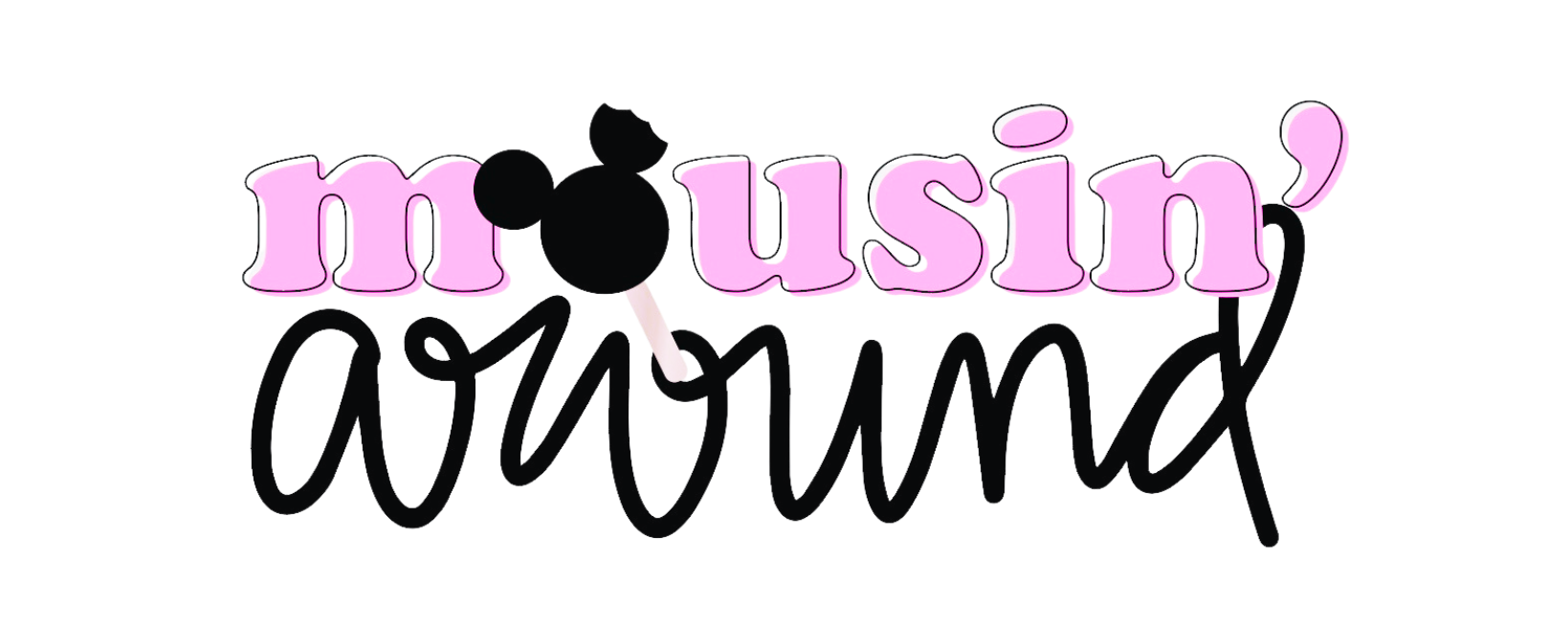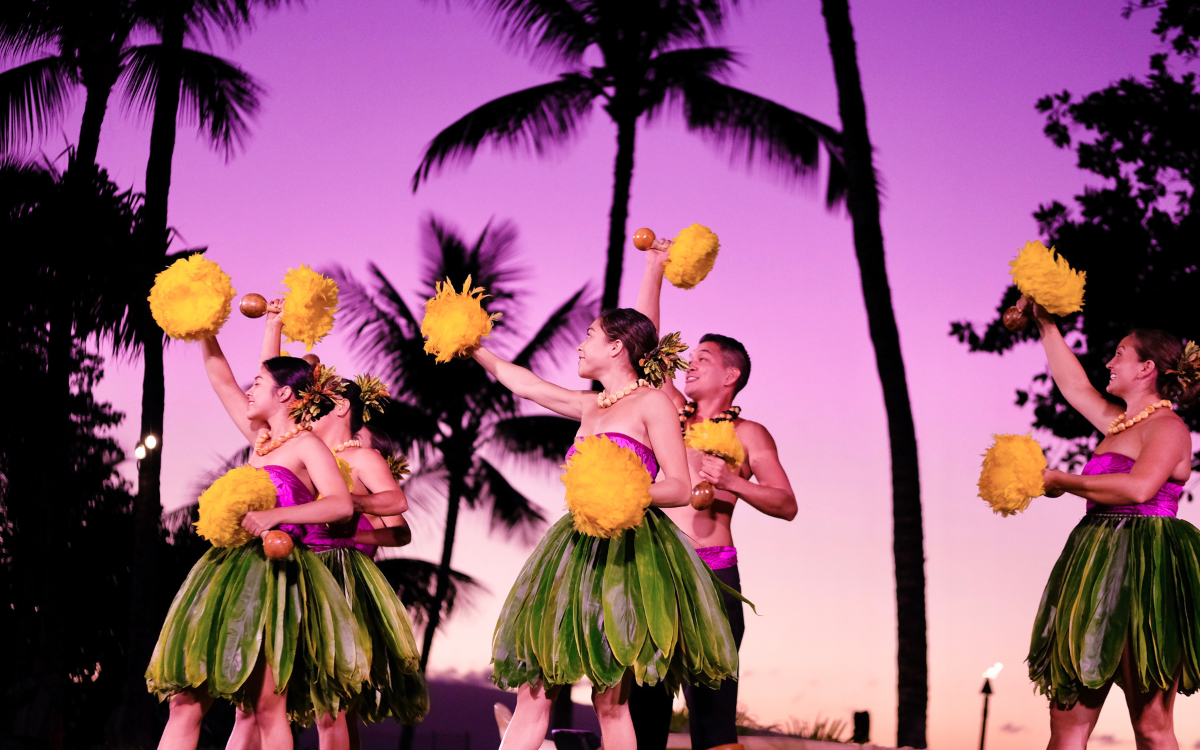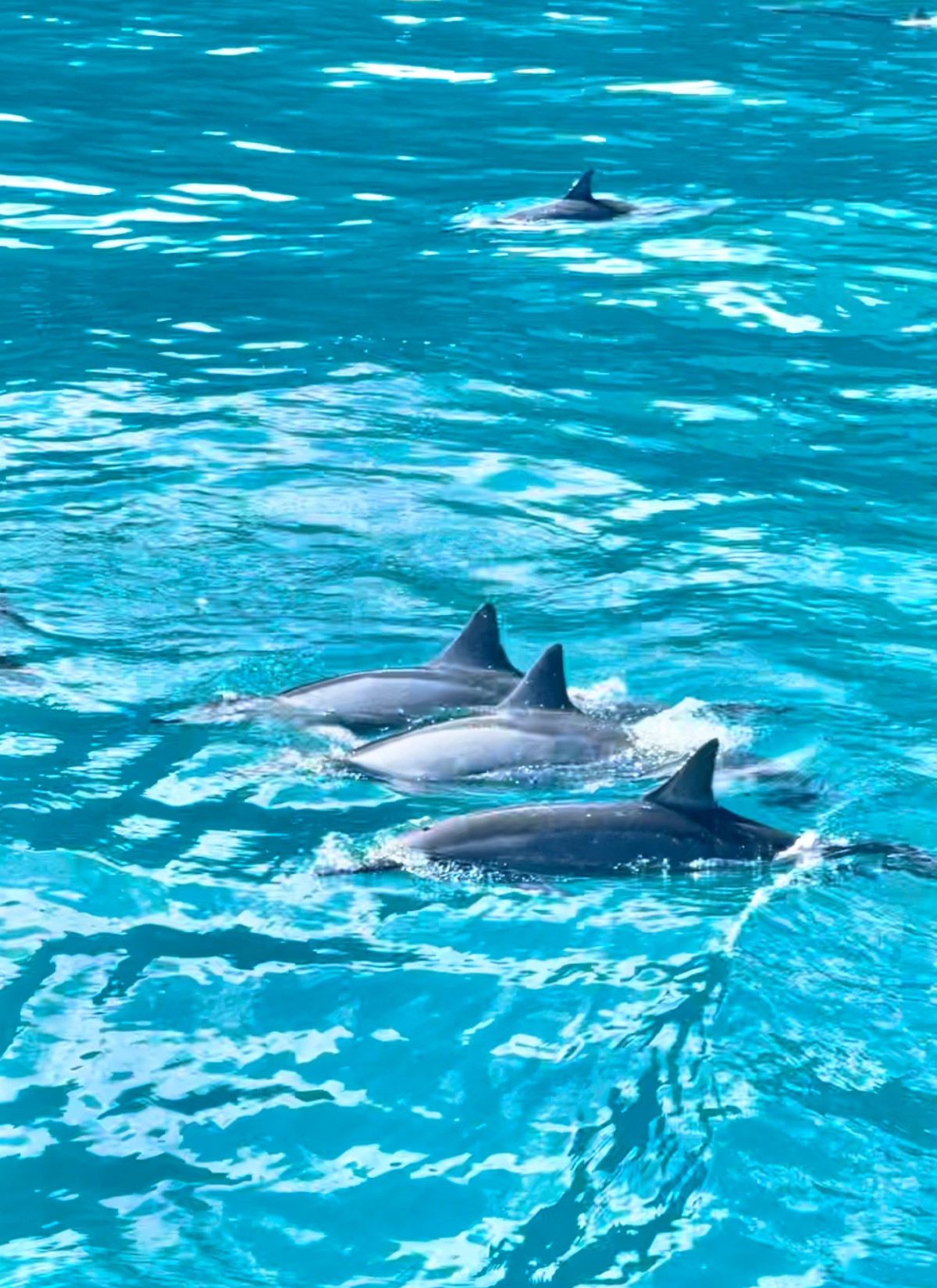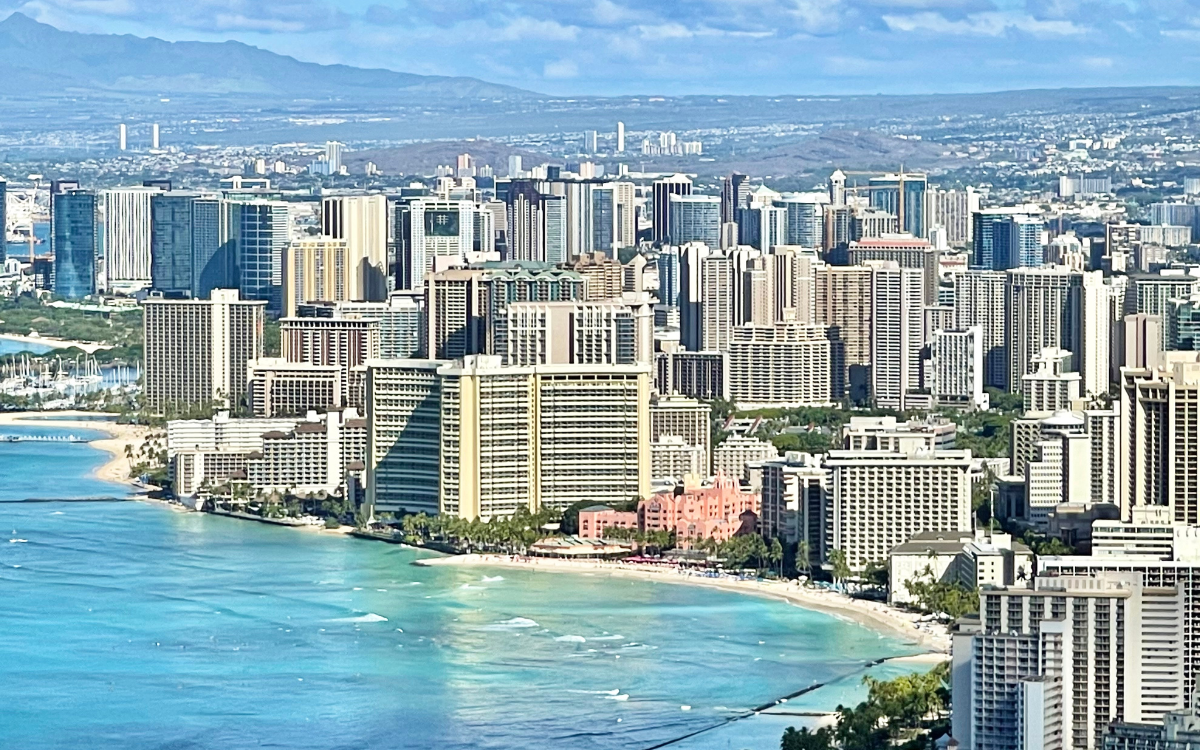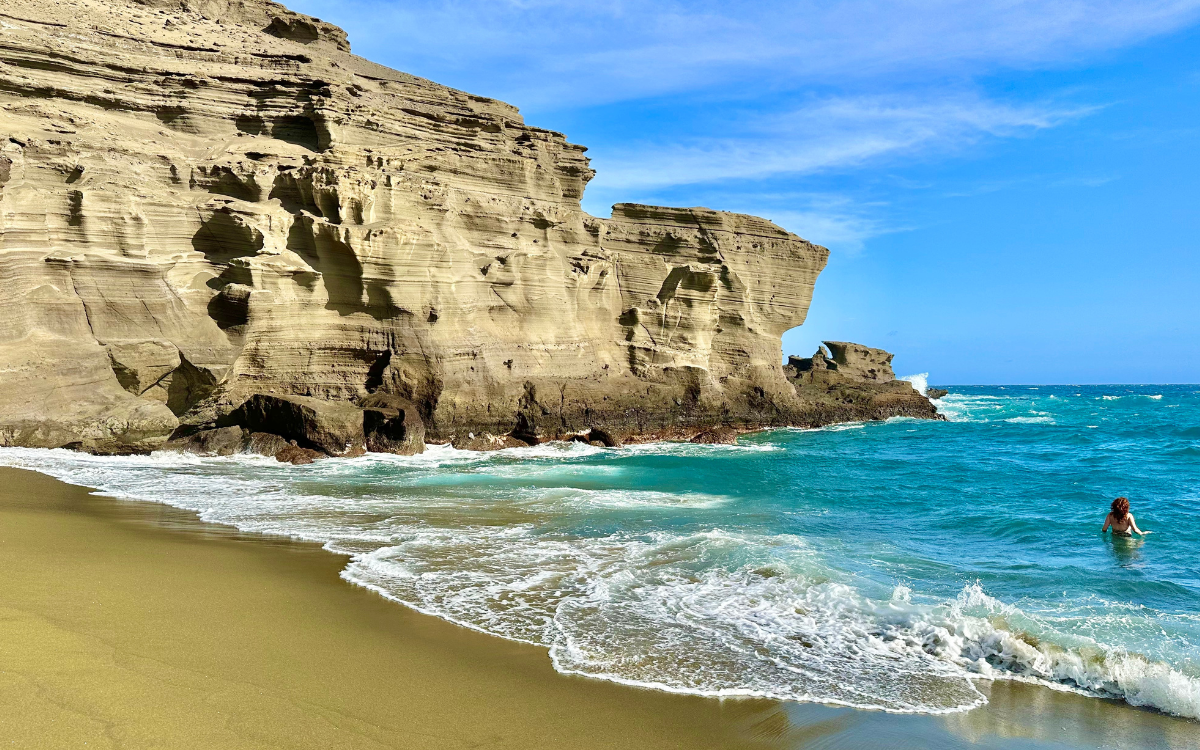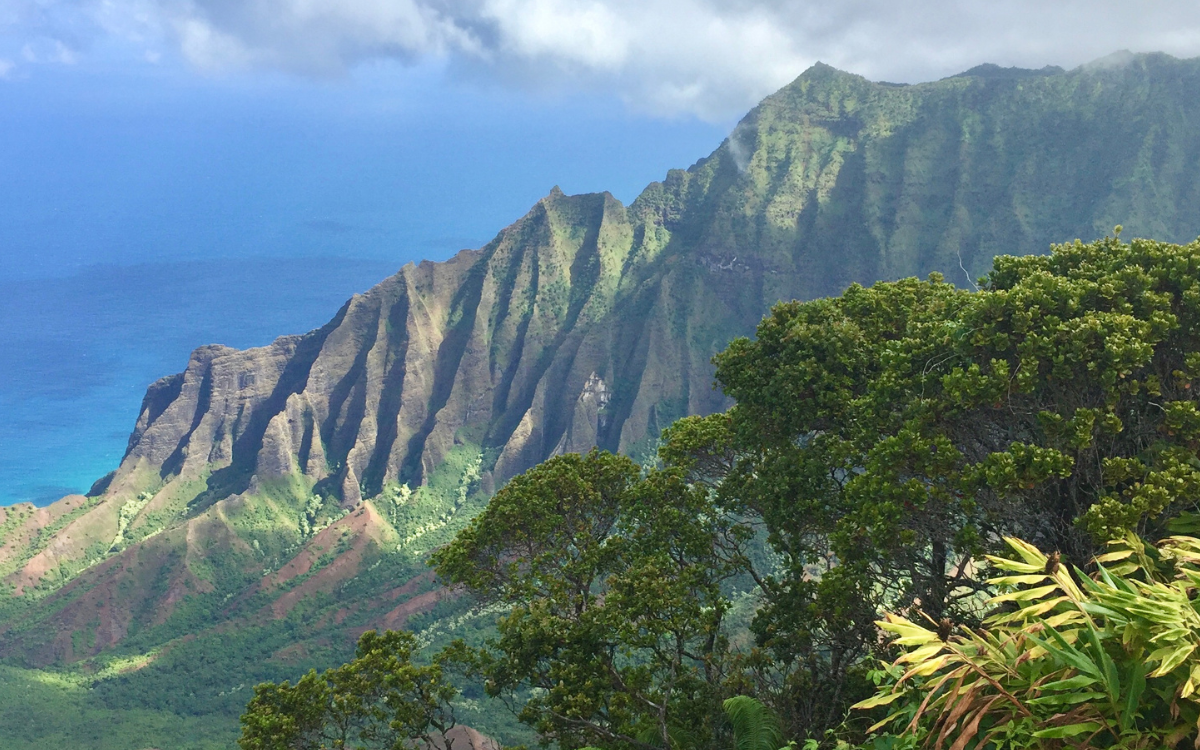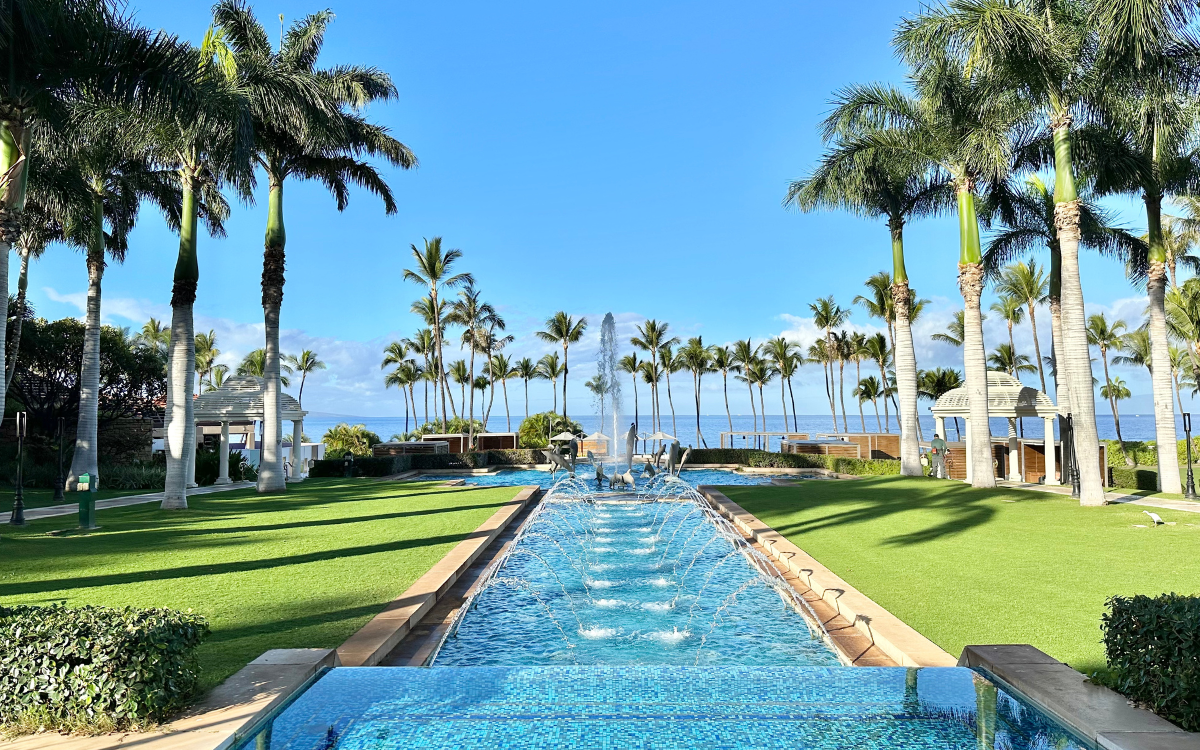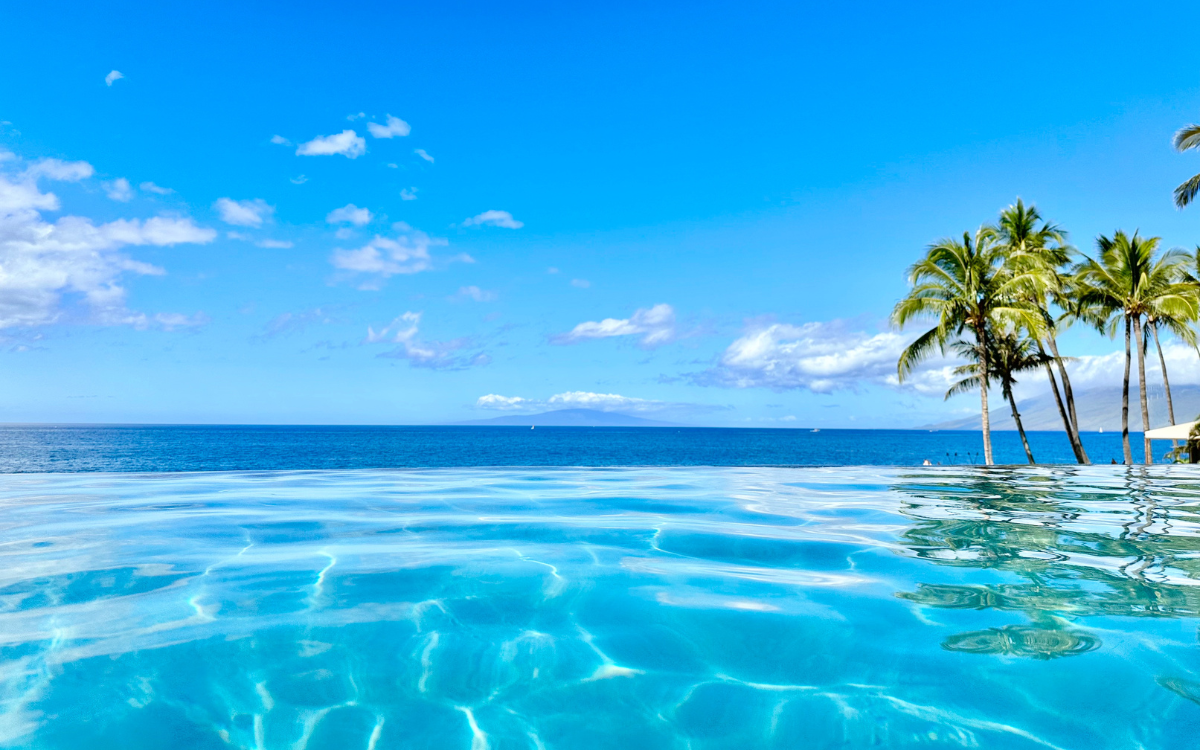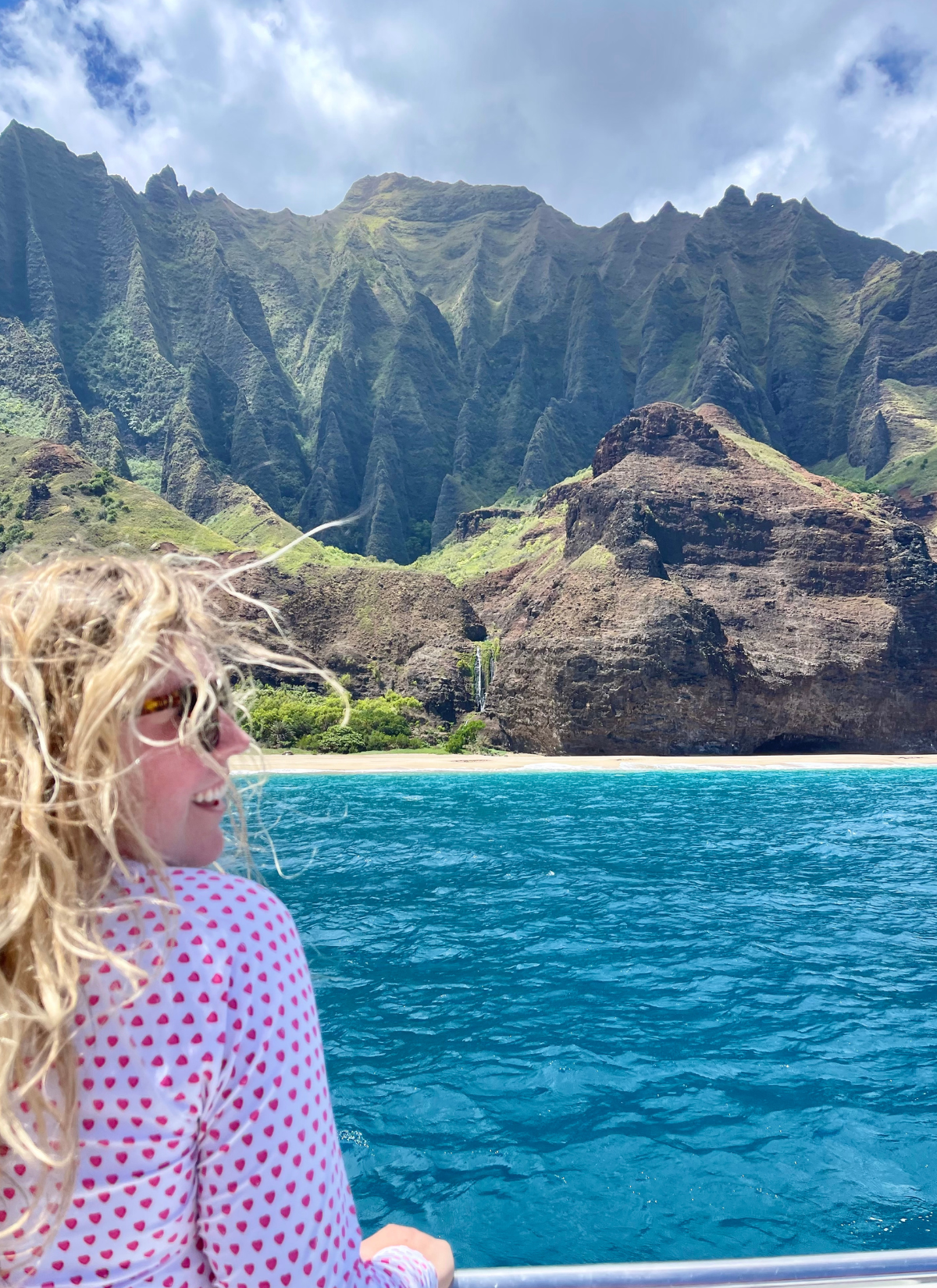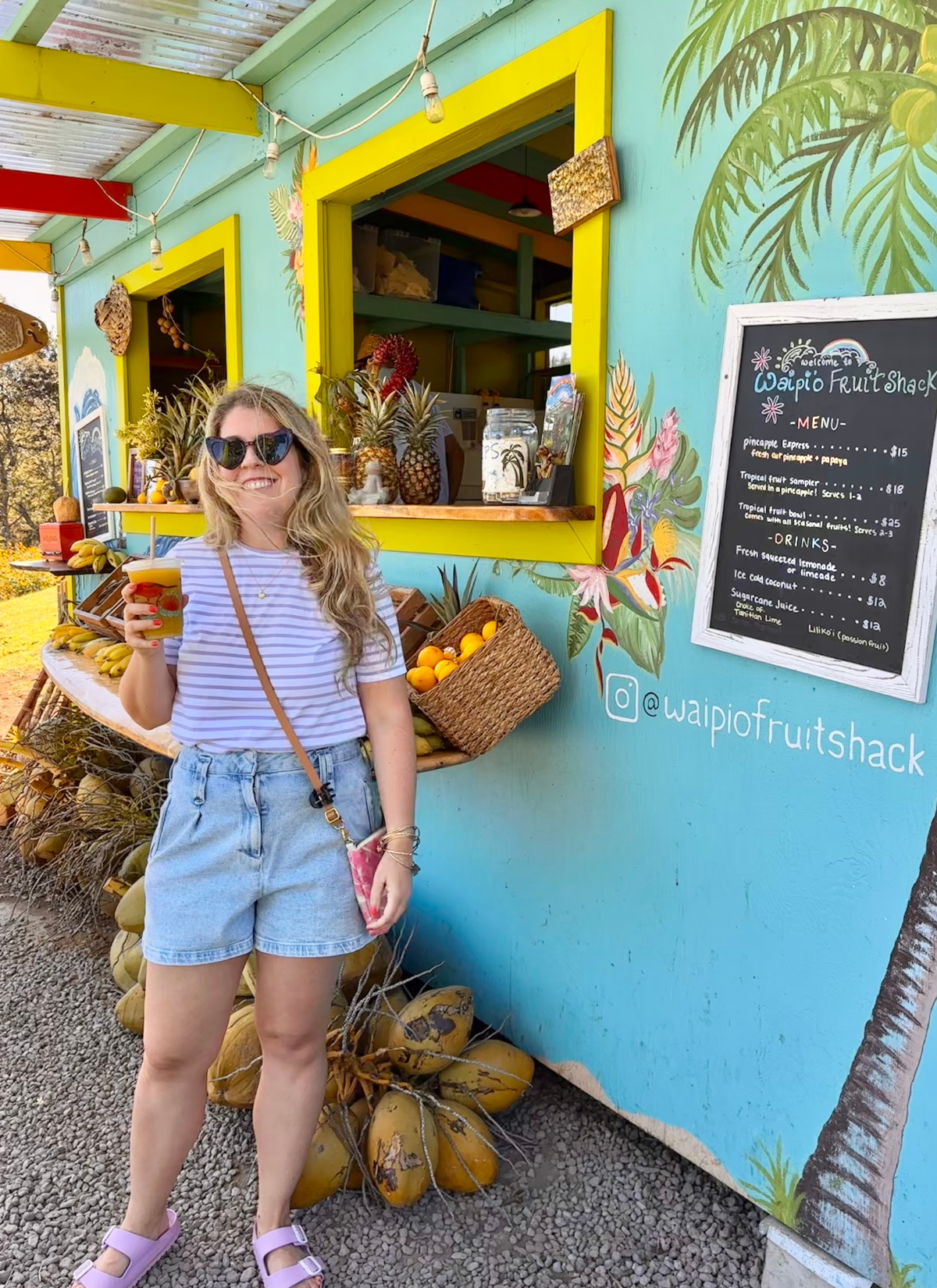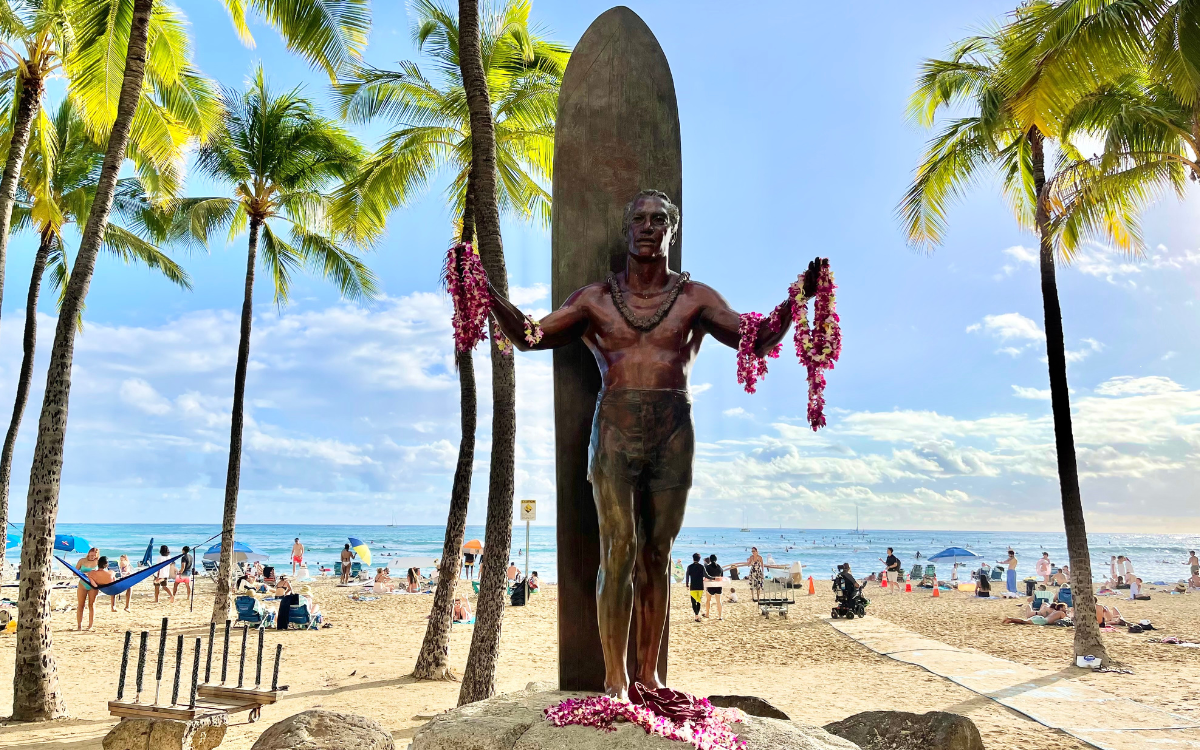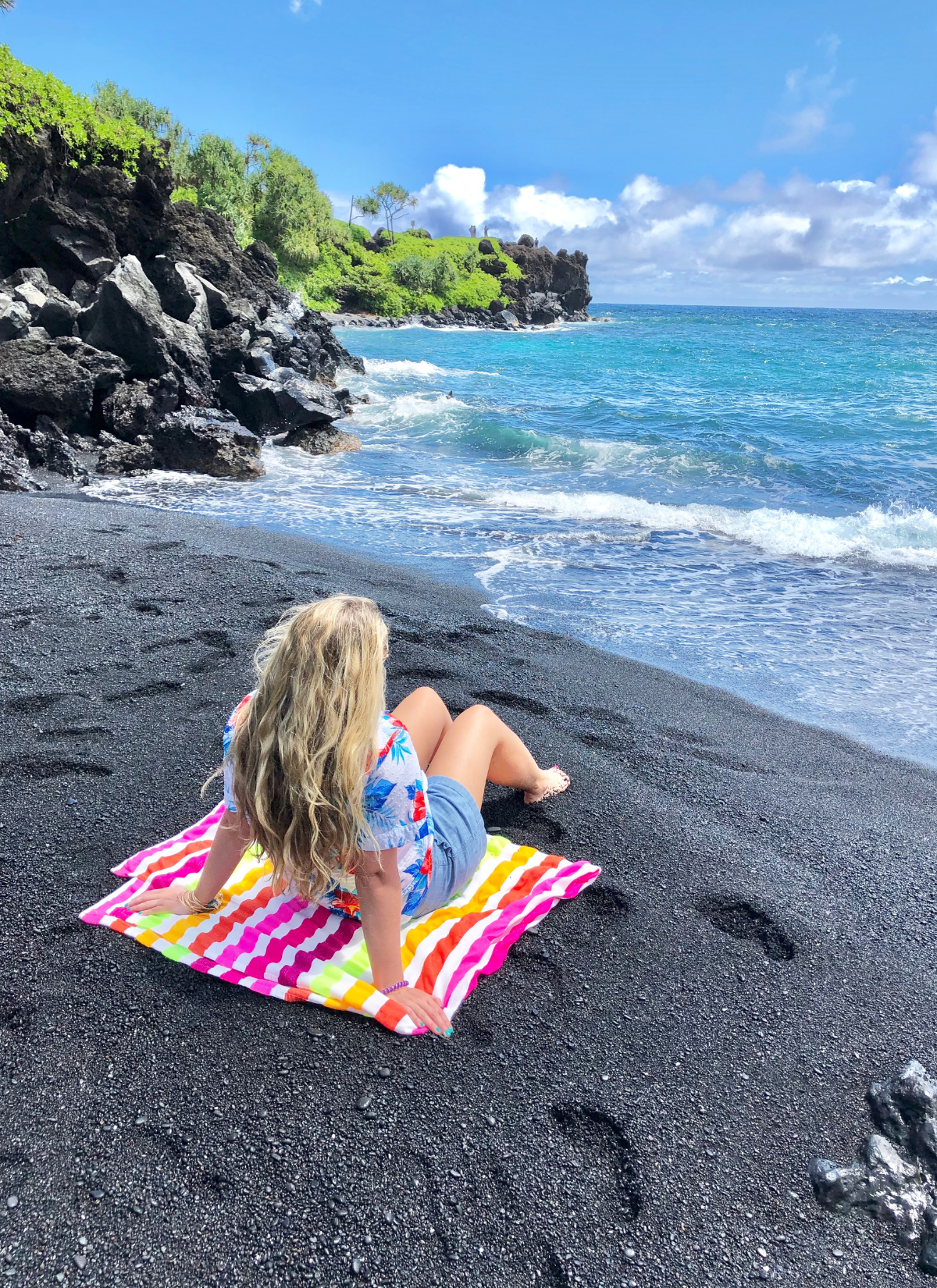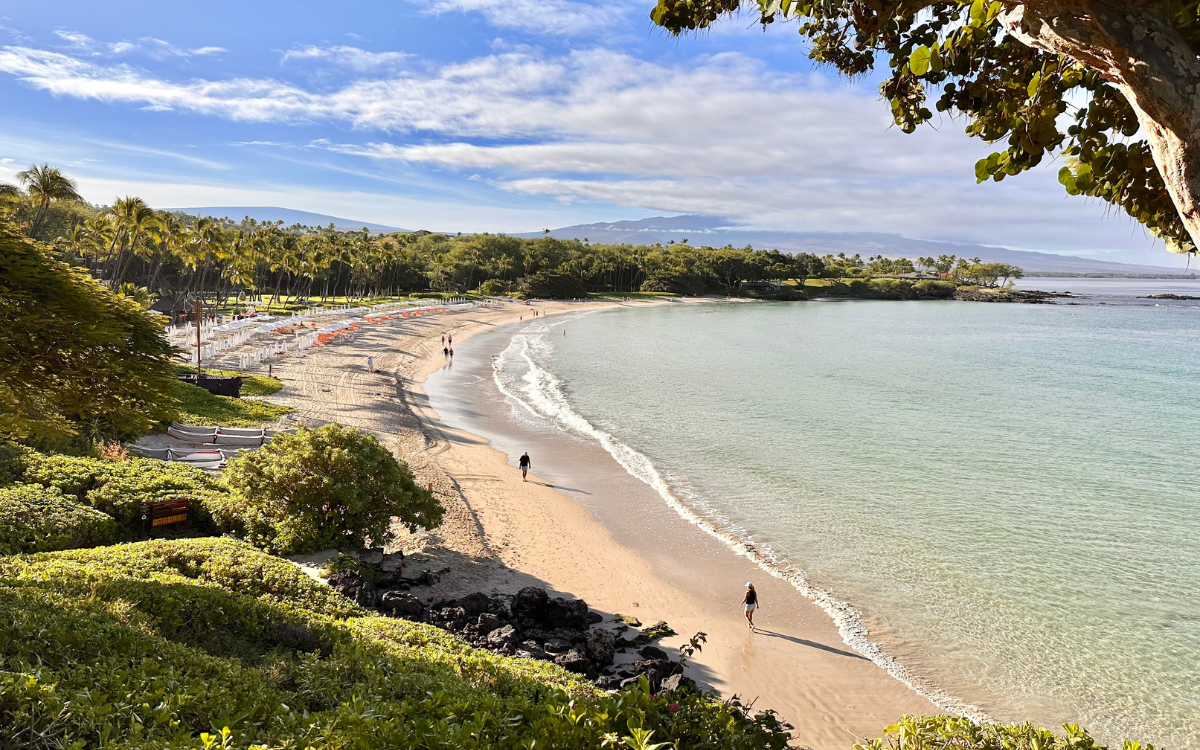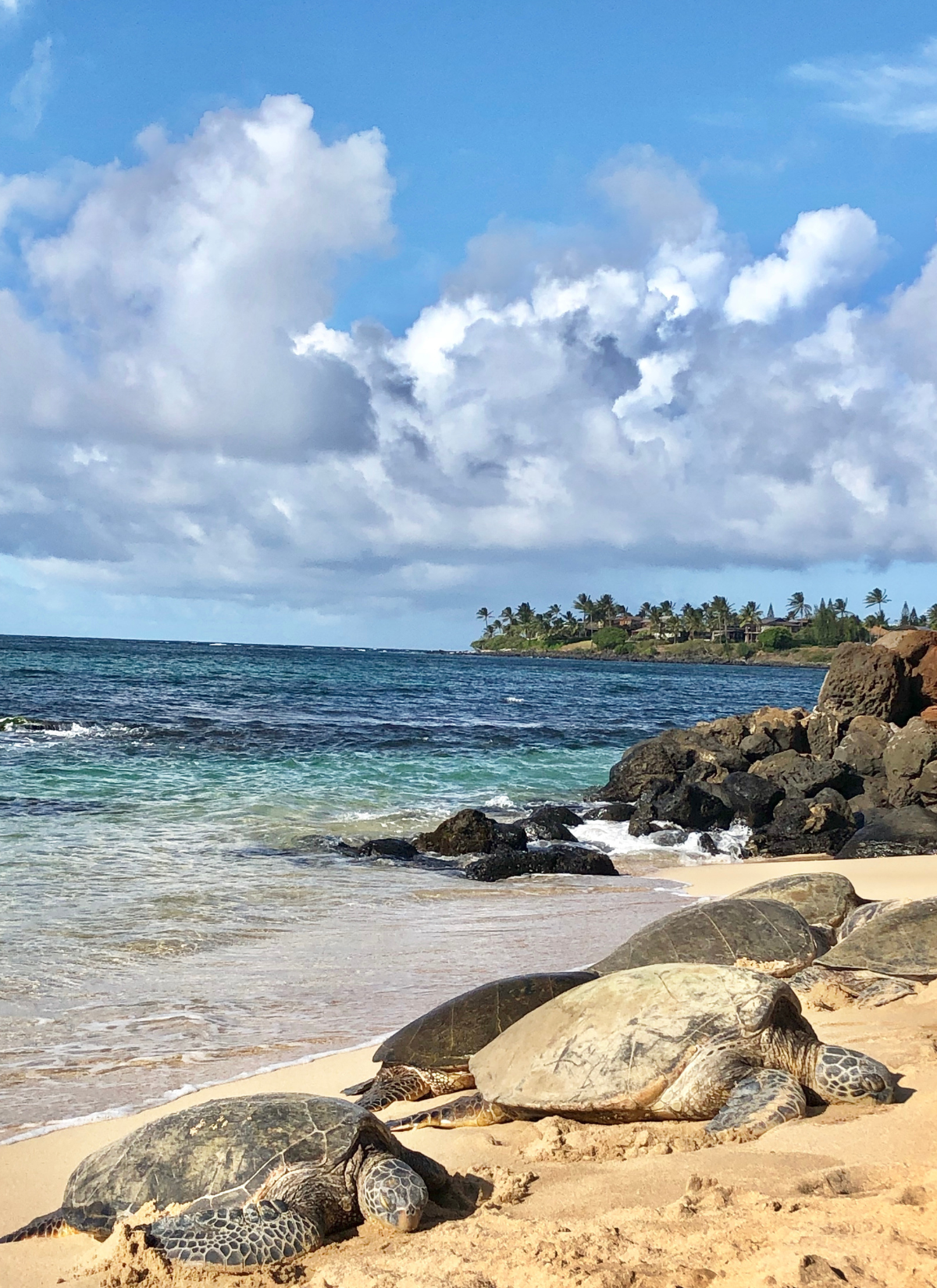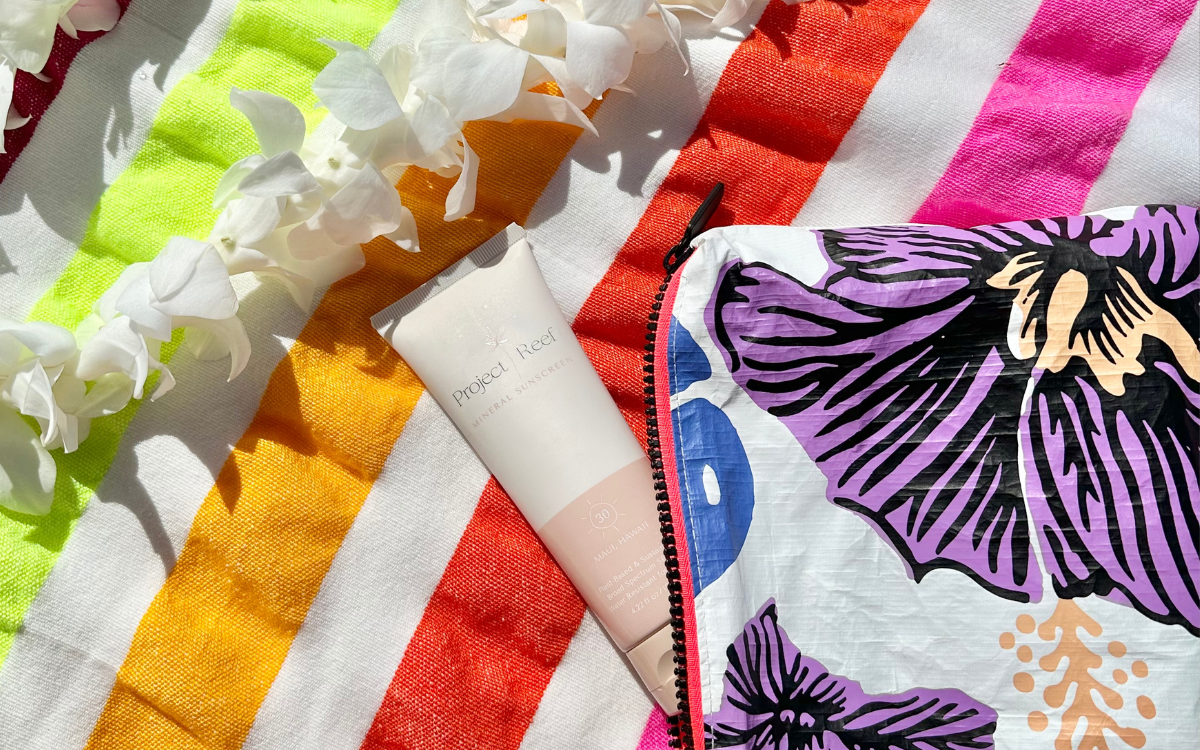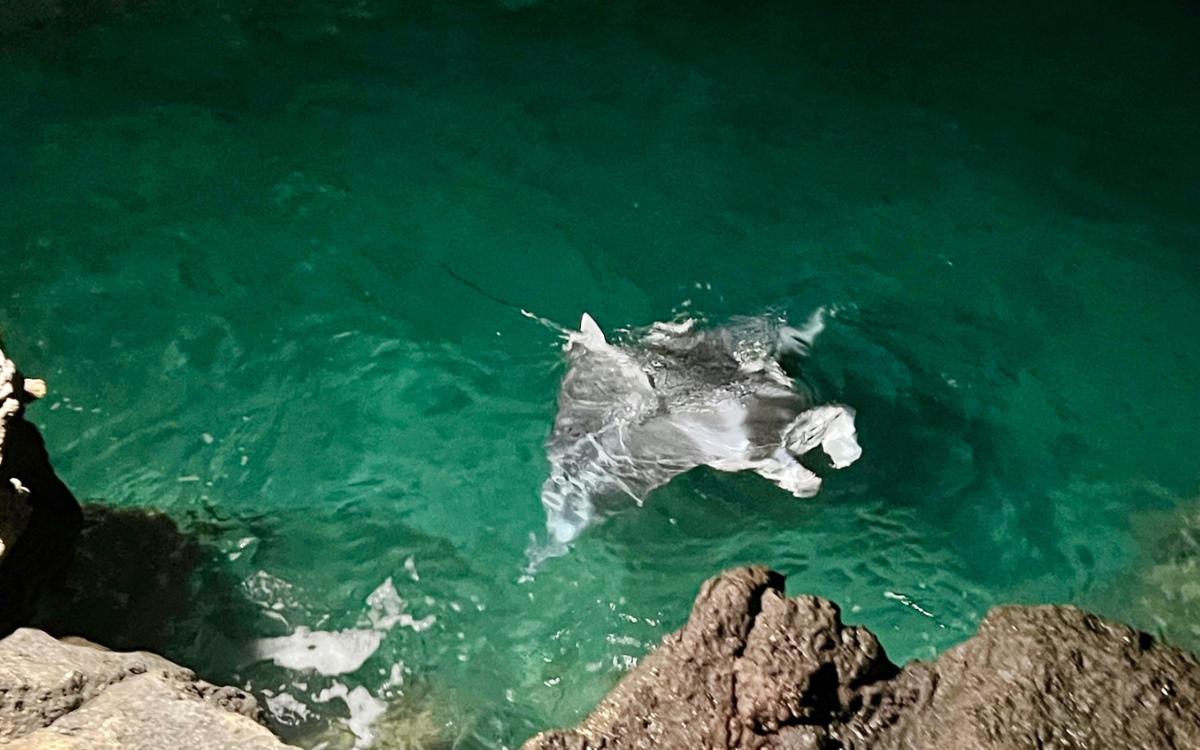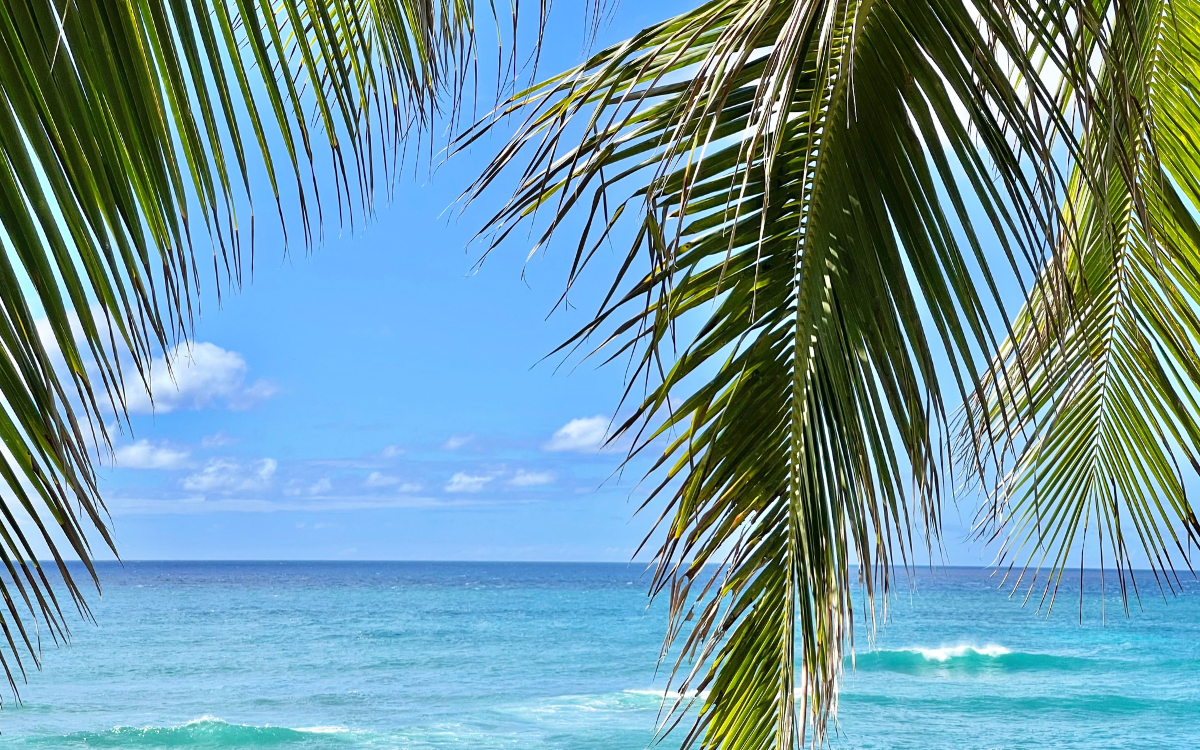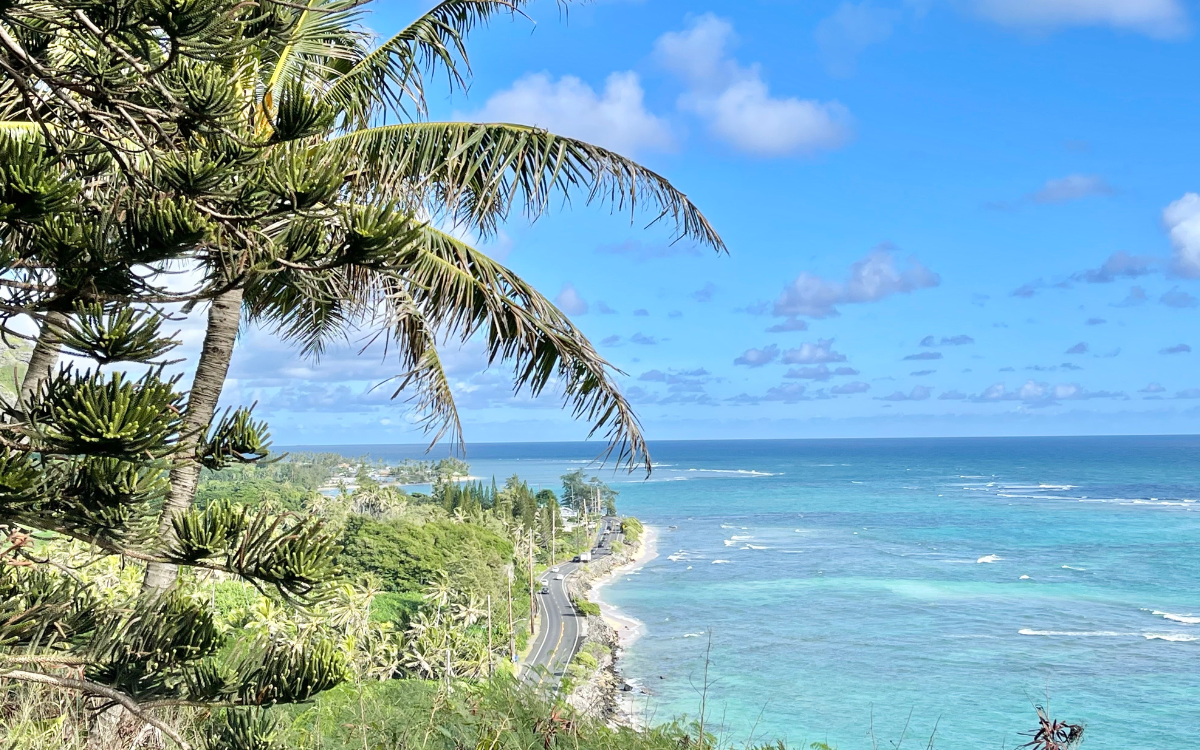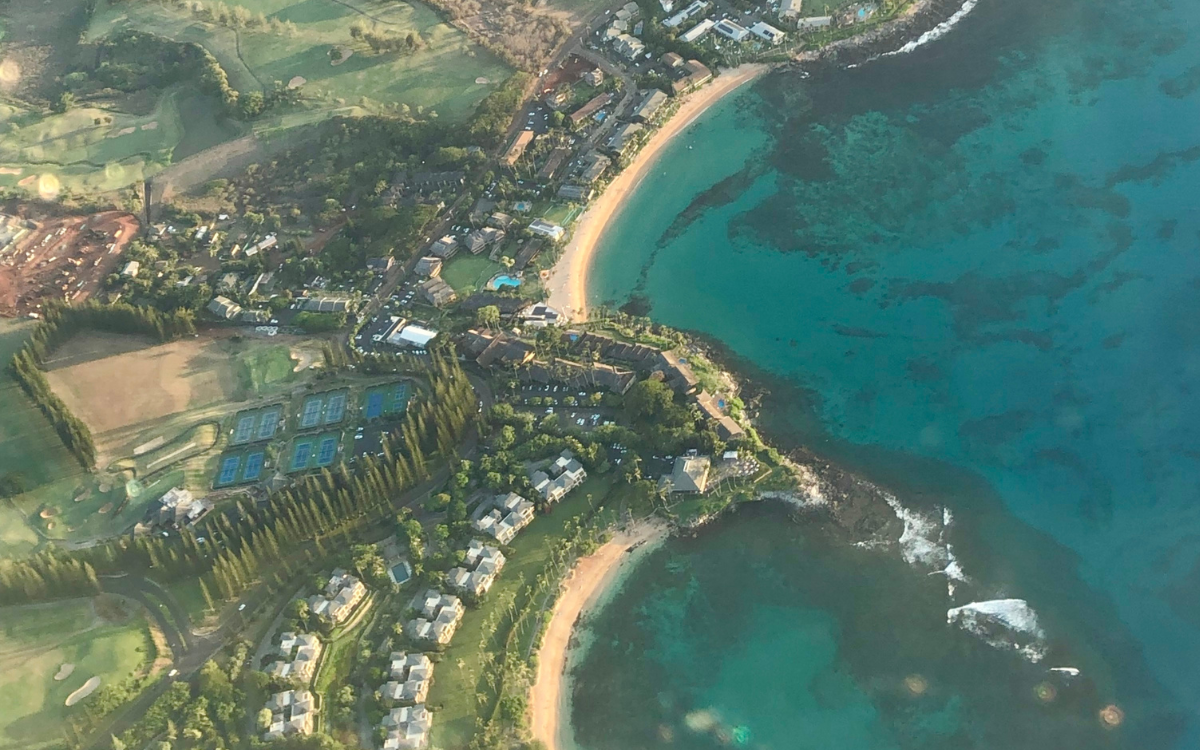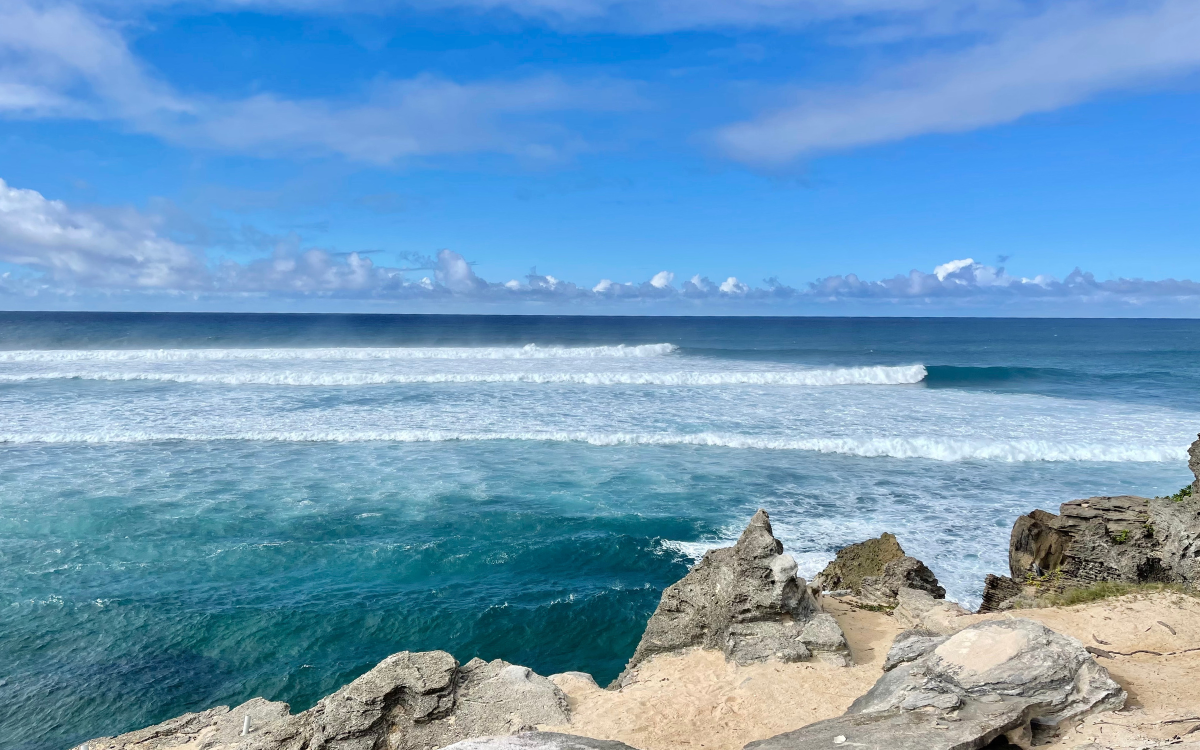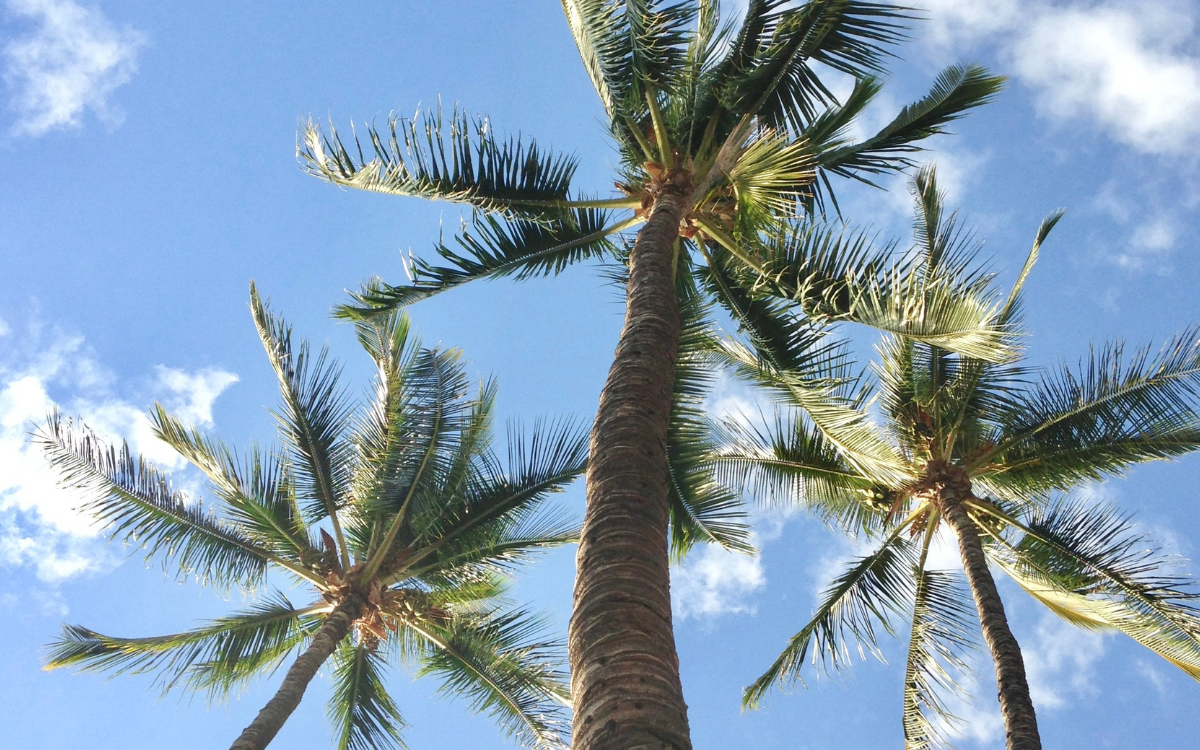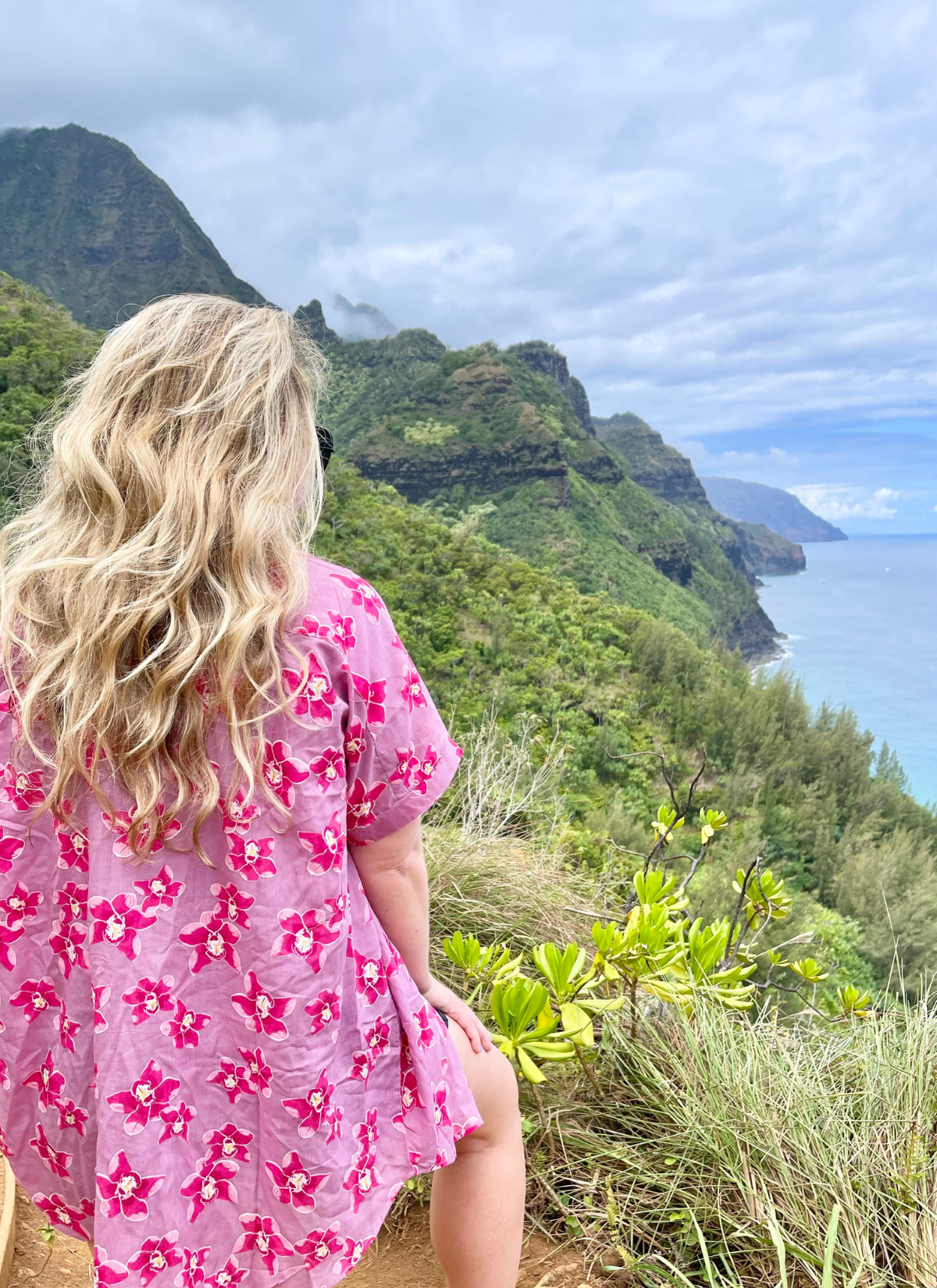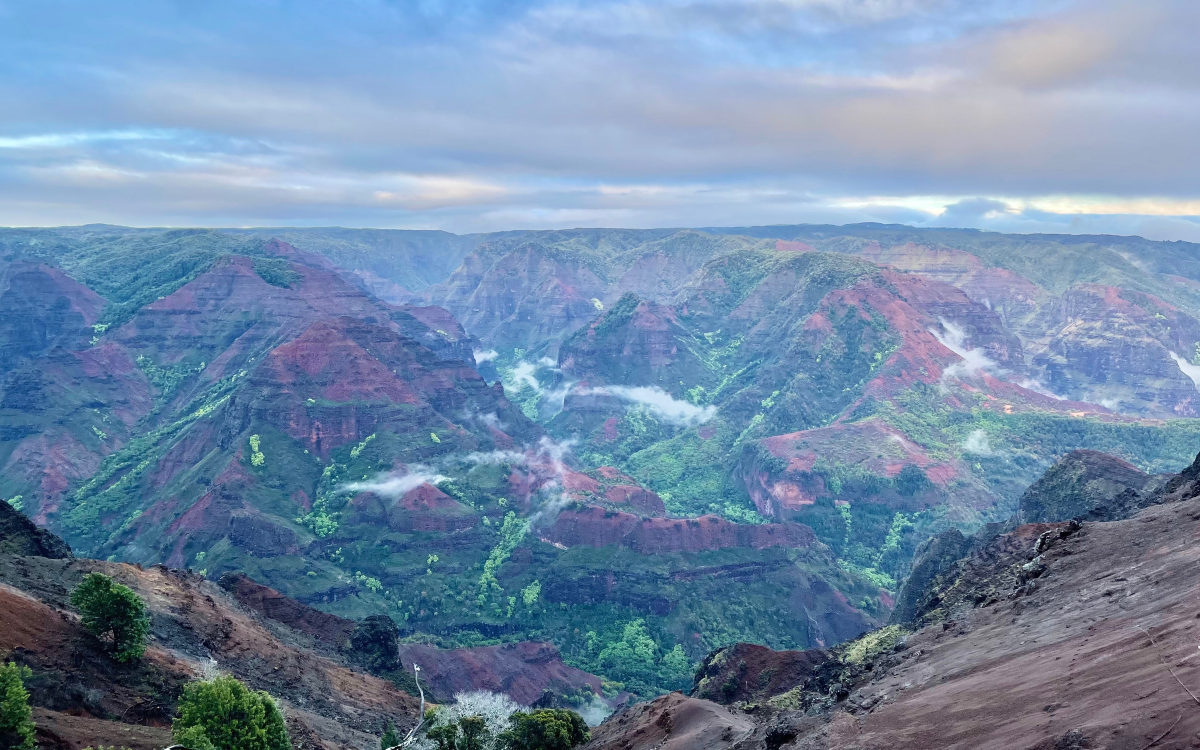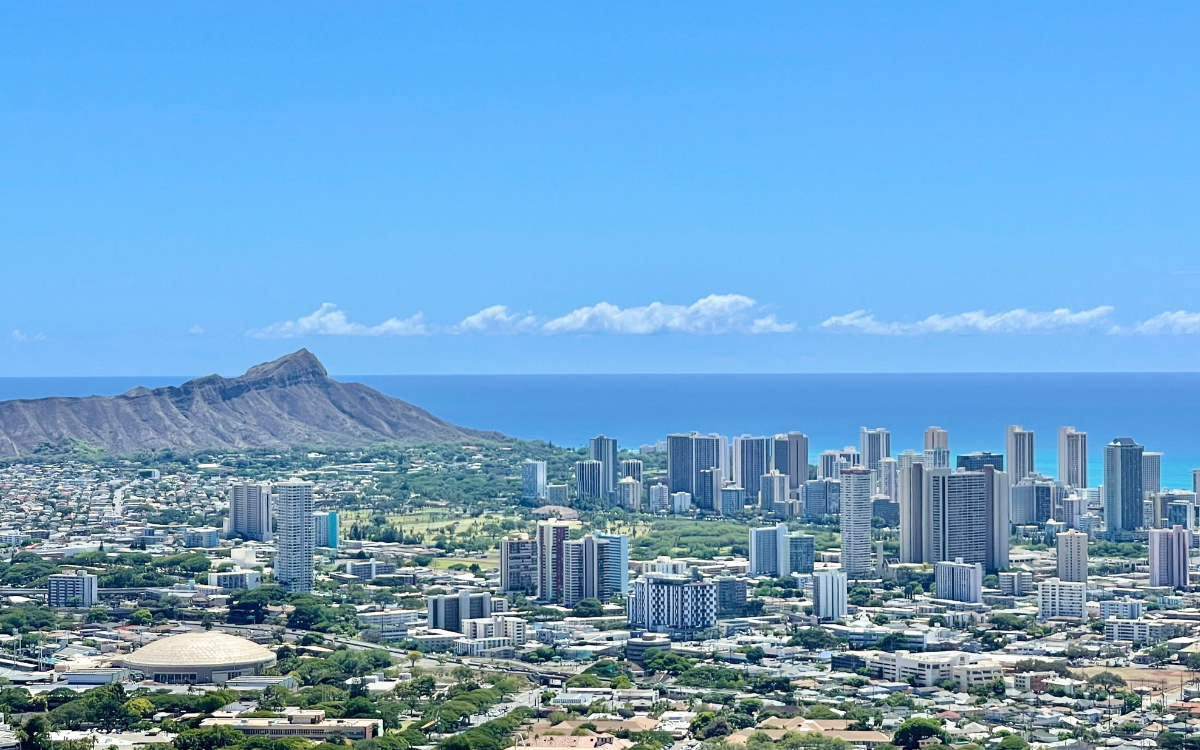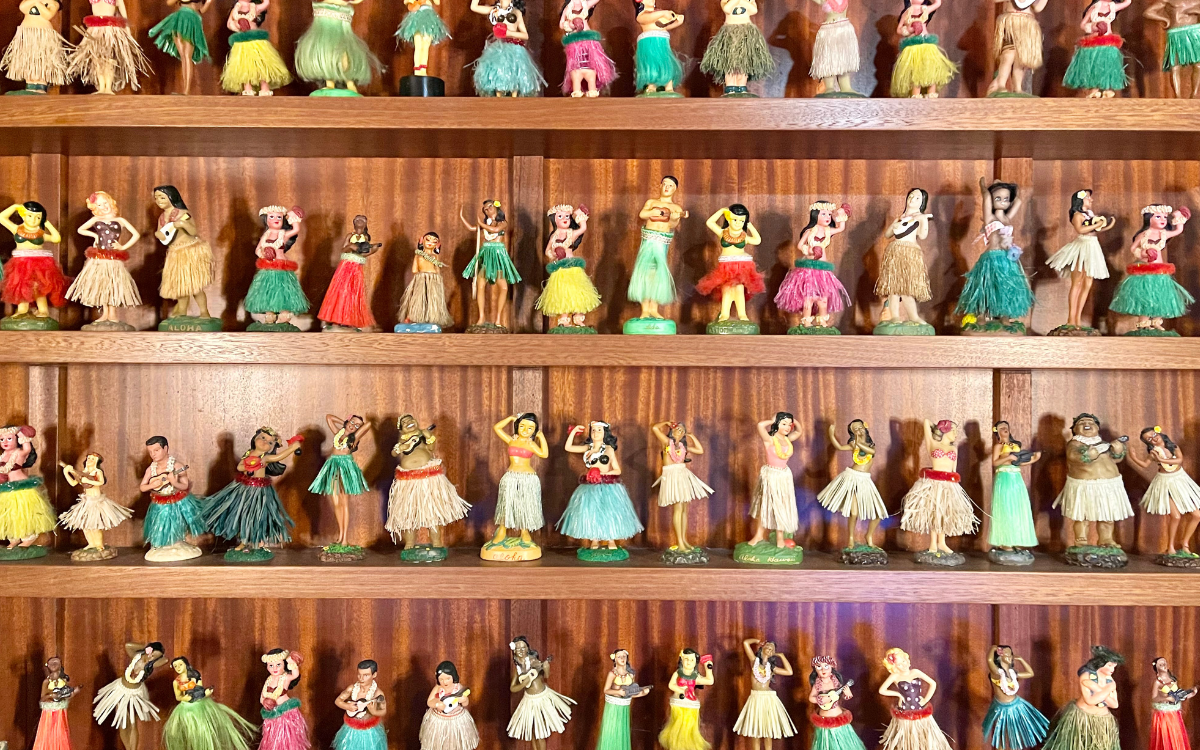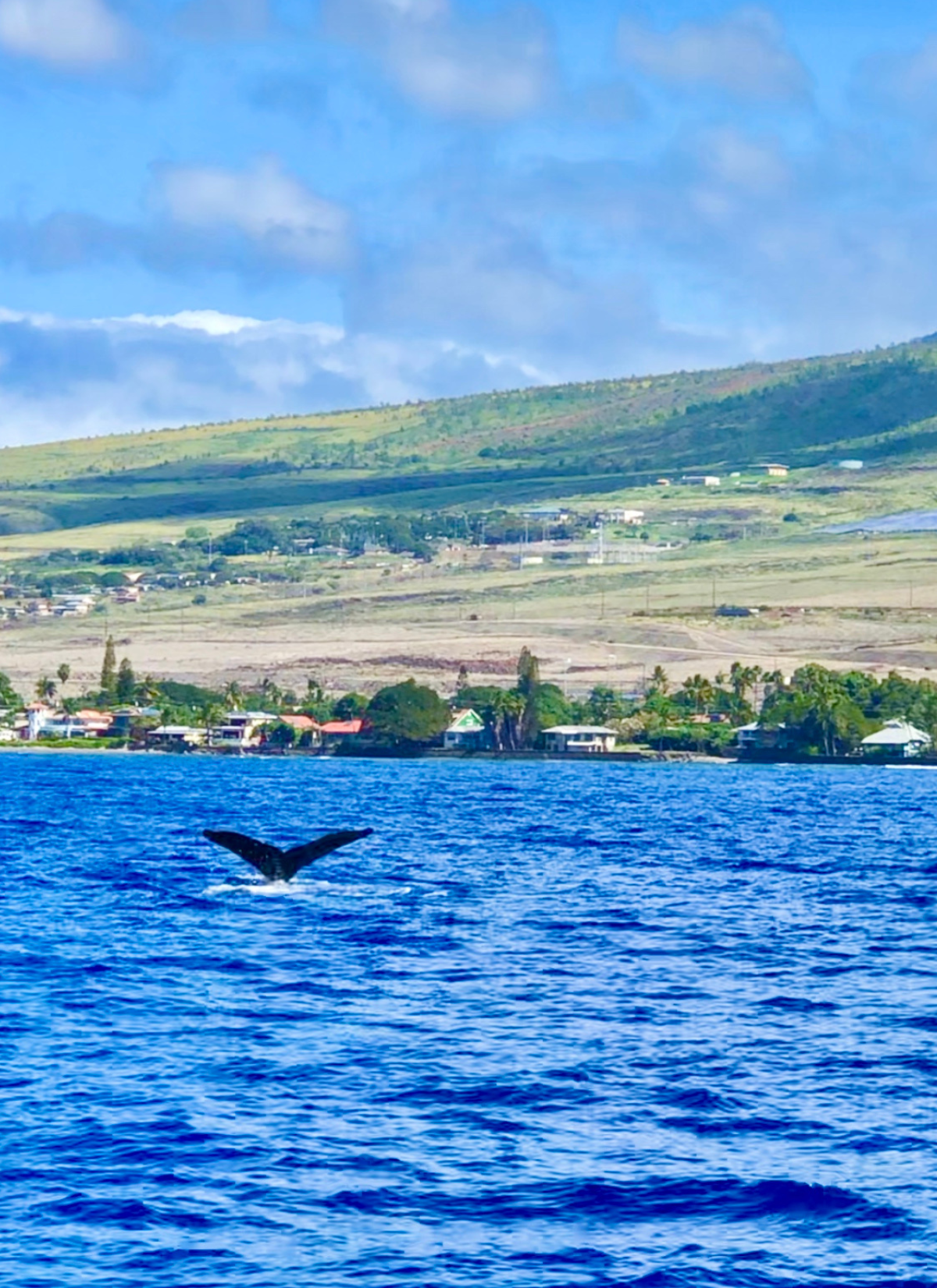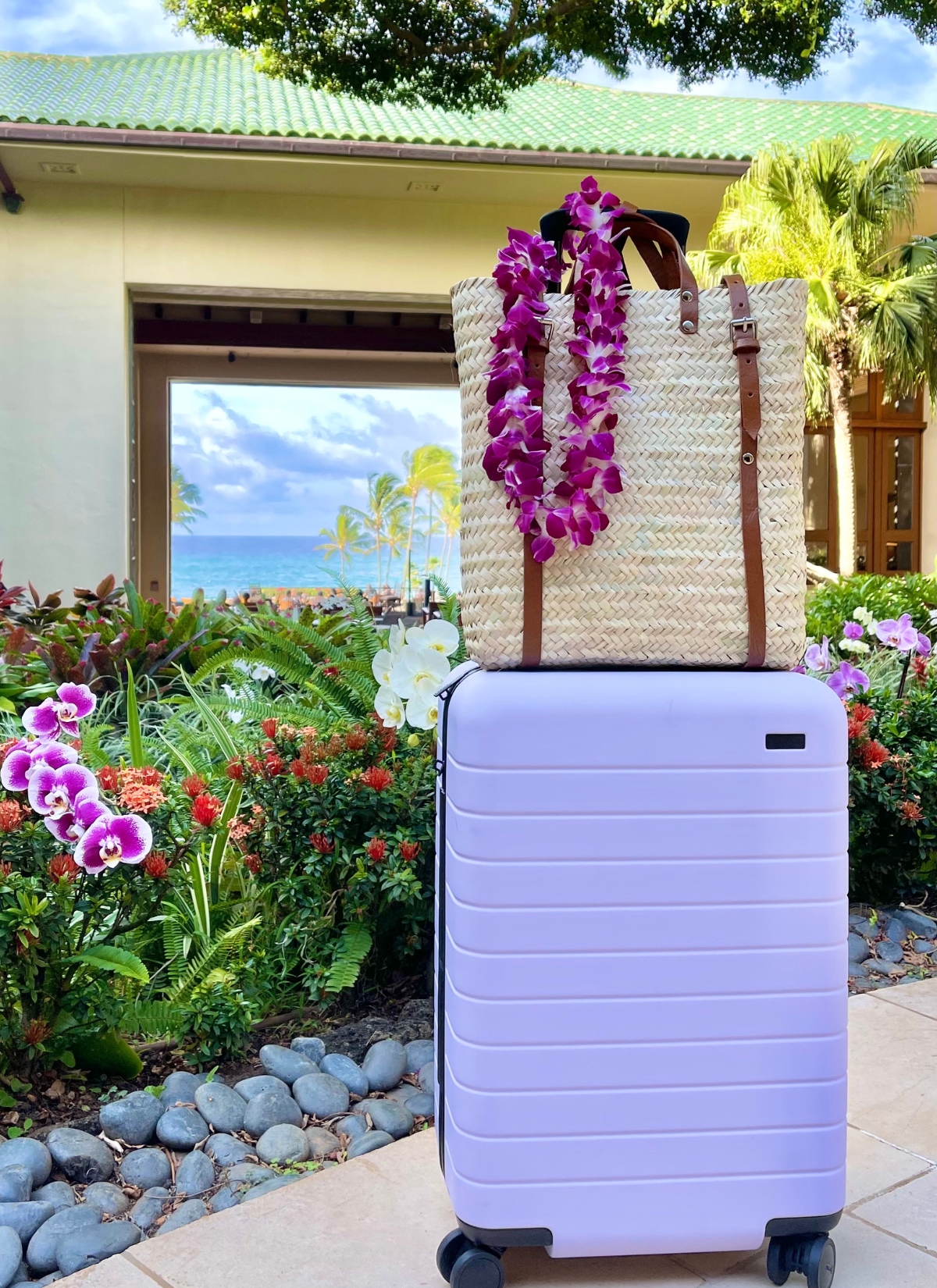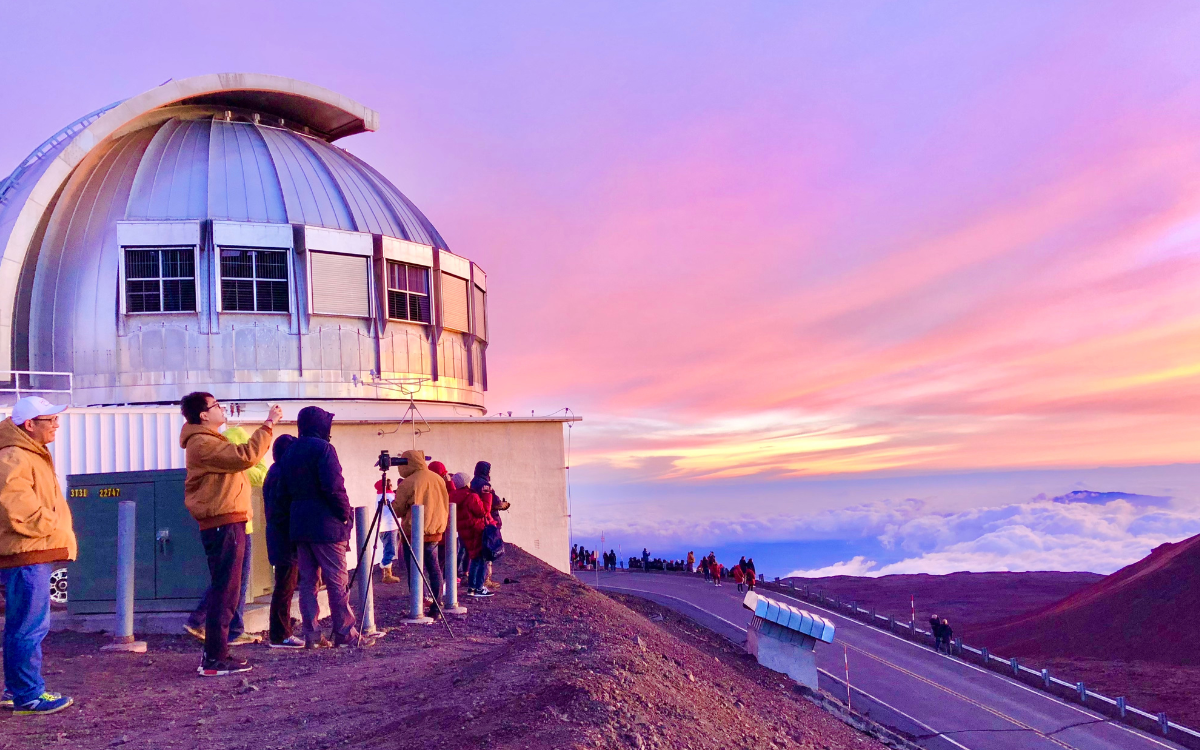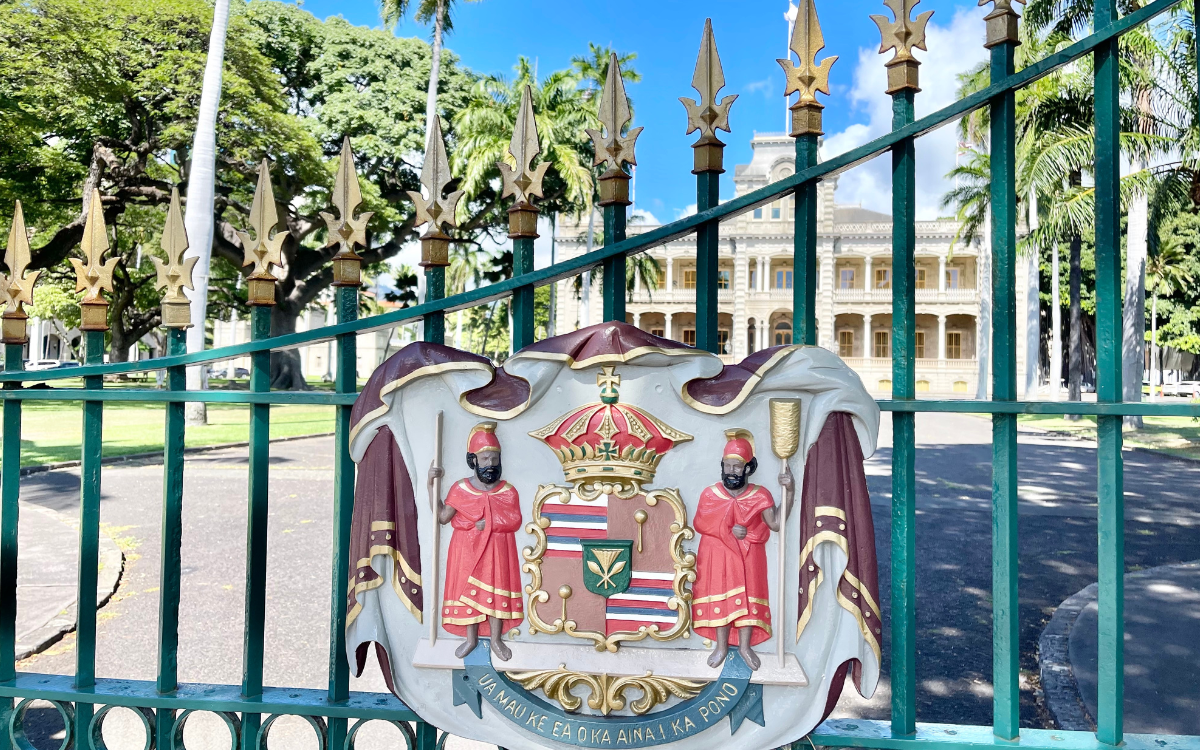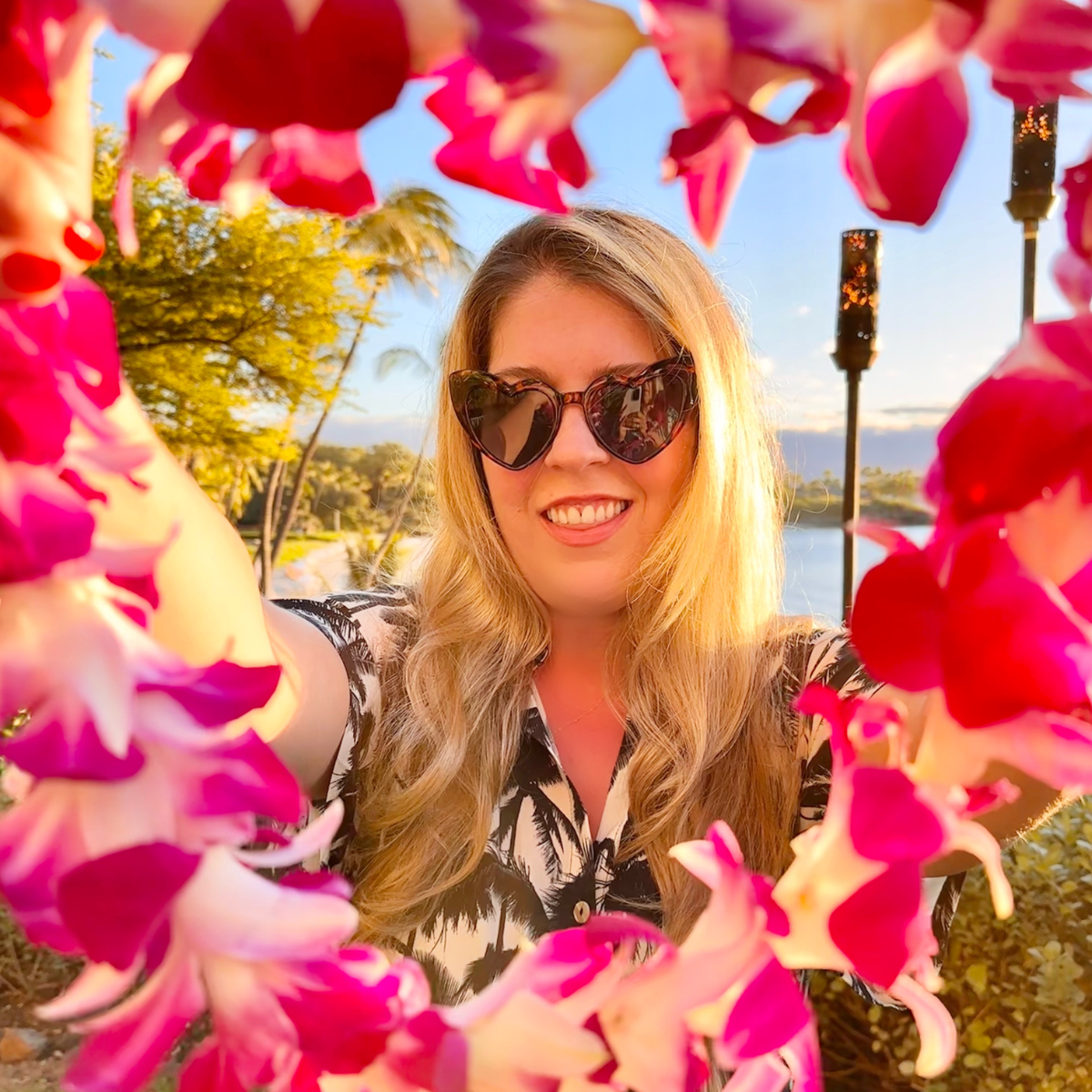37 Hawaii Travel Tips: Don’t Make These Mistakes on Your Trip to Hawaii
Hawaii Travel Tips – What NOT To Do
Don’t make these mistakes if you want to 1) stay safe, 2) not look like a dumb tourist, 3) not spend unnecessary money, and 3) have the best vacation possible ; )
Enjoy your trip to Hawaii!
1.Don’t think there’s only one island to visit
EVERYBODY knows about Oahu (Honolulu & Waikiki), but there are actually four main Hawaiian Islands: Oahu, Maui, Kauai, and the Big Island (also called Hawaii Island). Plus two smaller islands (Molokai and Lanai) and two other islands that aren’t open to the public (Kaho’olawe and Ni’ihau).
So, yes, Oahu is the main island (home to over a million people) but it’s not the “Big Island” and it’s not necessarily the best.
Read More: Which Hawaiian Island to Visit // Maui vs Kauai
2.Don’t spend all your time in Waikiki
If you do end up on Oahu (it’s so beautiful!), don’t make the mistake of spending all of your time in Waikiki. A lot of people end up in Waikiki by default (it’s where the majority of hotels are) and are shocked to find that it’s basically a city on the beach.
It’s a great place to stay as a basecamp while you’re out exploring the whole island, but if you want the true Hawaiian vacation experience on Oahu, try staying in Ko Olina, in Turtle Bay, or in a vacation rental on the north shore or windward coast.
Read More: Where to Stay on Oahu besides Waikiki
3.Don’t underestimate the size of the islands and how long it takes to island hop
In terms of size: Big Island > Maui > Oahu > Kauai
While there’s a big size difference between Kauai and the Big Island (ALL of the Hawaiian Islands could fit inside the Big Island with room to spare), generally speaking these are not tiny islands like you’ll find in the Caribbean.
Going from one end of the island to the other could take hours (both because of their size and also because of a lack of direct roads).
Each island is also incredibly diverse with a LOT to see and do. You could easily spend a solid week on each island just going and doing and seeing.
So don’t make the mistake of thinking you can knock out three islands in one week.
Read More: 38 Incredible Places to Visit in Hawaii
4.Don’t try to visit too many islands in one trip
Also, island hopping isn’t as simple as it sounds. Yes, the islands are only a 30ish minute flight from each other, but you still have to go through the main TSA security at each airport and the recommended 2 hour early arrival which makes it an ordeal.
Changing islands means packing, checking out of your hotel, driving to the airport, returning your rental car, checking bags, going through security, waiting to board your flight, the actual flight itself, waiting for your bags, getting your rental car, driving to your hotel…you lose the better part of the day when you change islands.
It’s doable, but I’d only recommend it if you have enough days to really settle in.
The good news is that these days, the four main islands are all easily accessible from the mainland (or a quick layover in Honolulu). Here’s a list of each island’s major city and airport code:
Oahu: Honolulu (HNL)
Maui: Kahului (OGG)
Kauai: Lihue (LIH)
Big Island: Kona (KOA) or Hilo (ITO)
5.Don’t think cheap airfare equals a cheap trip
Since Southwest entered the chat, airfare to Hawaii has never been cheaper. Just don’t make the mistake of snagging an insane $250 round trip ticket from the west coast and think that the rest of the trip is going to match the price of the airfare.
Hawaii has gotten expensive. Yes, you can do it for less if you’re willing to cut here and there, but I get emails from a lot of people in a panic that they thought they’d be able to “splurge” and get a beachfront resort on Maui for $350 per night. Turns out they’re double, triple, even quadruple that and their budget will only get them a condo (and not as nice of one as they were hoping for).
Can you find a $200/night condo on Maui? Yes. Will it be everything you’re hoping for? Only you can say, but it’s a good thing to find out before you buy the tickets.
Read More: How to Find Condos on Maui // Where to Stay on Maui // Where to Stay on Oahu // Where to Stay on the Big Island // Where to Stay on Kauai
6.Don’t act like an entitled tourist.
It’s the worst. Just because you’re spending a lot of money to be there doesn’t mean you can 1) act like a jerk, 2) be demanding, 3) do whatever you want.
Hopefully this sounds super dramatic to you and something that should go without saying WHEREVER YOU ARE IN THE WORLD, but hey, some people are crazy and it has to be said.
***Want to save major $$$ on your trip to Hawaii? I get asked ALL the time how I’m able to travel so often to Hawaii and stay at really nice resorts. Well, my favorite travel hack is cashing in points to score free airfare and free nights at some of Hawaii’s most high end resorts. Read my full guide on the exact system I use to max out credit card rewards here. Seriously, it’s going to save you soooo much money.
7.Don’t skip renting a car
You absolutely will need a rental car. Hawaii is not an all-inclusive destination where you’ll arrive by shuttle and never leave your resort (I mean you could do that…but it’s pretty expensive just to get to Hawaii so most people want to actually see Hawaii. If you want a cheaper resort only vacation, just go to Mexico).
The islands are pretty large so unless you’re just going a few miles, taking Ubers and Lyfts isn’t really feasible (you could be talking $100 one way to go to another part of the island). Also, Oahu is the only island that has a decent bus system.
So you’ll most definitely want a rental car for your stay even if you’re staying in a resort area. I always book through Discount Hawaii Car Rentals. They’re seriously the only company I ever use. They’ll give you the very best prices, you don’t have to reserve with a credit card or pay until you show up, you can cancel and re-book anytime if you find a better rate, and they usually have a special that adds additional drivers for no fee. It’s a no brainer. Click here to check rates for your trip.
Read More: Do You Need a Rental Car in Hawaii?
8.Don’t unknowingly book an illegal vacation rental
Illegal vacation rentals have started to become a major problem in the last few years, but it’s starting to reach a boiling point. The rise in popularity of sites like Airbnb has resulted in a lot of property being bought by wealthy folks from the mainland (or internationally) and being rented out as short term vacation rentals to visitors. In addition to creating a housing crisis (it becomes much harder for local families to afford to be able to stay in the area), it also changes the community (i.e. more businesses and amenities catered towards tourists and less towards residents).
What does that mean for you? To get this problem under control, different counties (islands) have been passing (or starting to enforce) legislation that cracks down on illegal rentals. Lately, it’s been most dramatic on Oahu where there have been estimated to be as many as 10,000 illegal vacation rentals, but the other islands are turning their attention to cracking down on this problem.
A lot of visitors are shocked that it’s even an option to book something illegal on Airbnb or Vrbo, but the truth is those sites are just marketplaces and it’s up to YOU to use due diligence to make sure what you’re booking is on the up and up.
If you’re booking something through Airbnb or Vrbo, make sure you’re up to date on everything here.
Read More: Is Airbnb Illegal in Hawaii?
9.Don’t stay in the resort bubble the whole time
Hey, nobody loves the resort bubble more than me, but there is a LOT more to Hawaii than resort life. It would be a shame to go all the way to Hawaii and not..see Hawaii.
If you’re really hoping for a nice, relaxing vacation though, I would suggest either planning a sightseeing/adventure day every other day or getting out to explore a bit every morning and spending afternoons at the beach and pool.
Read More: Things You Can Only Do on Maui // Things You Can Only Do on Kauai // Things You Can Only Do on Oahu // Things You Can Only Do on the Big Island
10.Do your research to have the right expectations
Staying on Kauai’s north shore during the winter and SHOCKED that it’s raining every day? You didn’t do your research. Disappointed you didn’t see any whales when you visited in July?? You didn’t do your research. Bummed you couldn’t get a reservation at Mama’s Fish House once you showed up on the island? You REALLY didn’t do your research ; )
I’m all for going with the flow, but you still need to have a basic understanding of what to expect.
The volcano on the Big Island isn’t always pumping out lava. Sunrise at Haleakala can’t always be seen through the clouds. It rains more in the winter months unless you’re staying on the leeward (sunny and dry) side of the island.
You can’t change these things, but you can make different decisions if certain outcomes are important to you.
11.Don’t expect a lot of nightlife (outside of Honolulu)
On the outer islands (especially Kauai and the Big Island), pretty much everything closes up around 8 PM. And honestly Maui doesn’t have much going on past 9-10PM. If you need nightlife, you definitely want to be in Waikiki. And even then…Hawaii isn’t exactly known for its nightlife.
But it all works out because given the time change, you’ll probably be ready to turn it in a lot earlier than when you’re at home.
12.Factor in the time difference
The Hawaiian Islands run on the Hawaii-Aleutian Time Zone (HST). Hawaii does not observe Daylight Savings Time so the time difference depends on the time of year. It’s 2-3 hours behind west coast time, 4-5 hours behind Central Time, and 5-6 hours behind Eastern Time. So your jet lag experience will vary greatly depending from where you’re traveling. If you’re going from the west coast, you may not notice it much at all.
Here’s what I’ve found after traveling back and forth a lot: It’s way harder to adjust to coming home than going there. Mostly this is due to the direction you’re traveling, but I also think adjusting to a non-vacation routine just isn’t as much fun as the other way around.
So, what’s the easiest way to adjust? Personally, when I’m traveling (4-5 hour time difference from where I live) for a week or less, I try to stick to my home schedule (wake up and bedtime) as much as possible. It’s easy to get up at 5 or 6 in Hawaii with the time change and since sunrise is so early, I like to get my day started early (a good strategy for beating the crowds at popular spots) and hit the hay pretty early. This isn’t too hard in Hawaii as outside of Waikiki there’s not much nightlife. This makes the transition back home a lot easier.
Now if you’re trying to acclimate to Hawaii time…most flights to Hawaii arrive in the afternoon. Do not nap! Stay awake and busy as late as you can. If you can make it until 8 or 9 PM, I consider that a victory!

13.Don’t imply that Hawaii isn’t part of the US
No, you don’t need a passport ; ) And avoid saying things like “back in the states.” You’re in “the states.” Locals refer to the continental US as the mainland.
14.Don’t get caught without reservations for Hawaii’s top sites
As part of an effort to curb some of the effects of overtourism, a lot of Hawaii’s most popular spots (like national parks and some state parks) now require advance reservations. Entering Haleakala National Park during “sunrise hours” requires advance reservations. Hiking Kauai’s famous Kalalau Trail requires advance reservations (and they’re hard to get!). Seeing Maui’s black sand beach requires advance reservations.
There are a dozen or so sites around Hawaii that will require some advance planning. More details on all of that at the end of this post.
15.Don’t skip doing the research
Along similar lines as #14…I know a lot of people like to “go with the flow” but Hawaii’s really popular these days and a lot of things book out before you arrive on island. If you’re just wanting to go to the beach and eat at food trucks you’ll be fine! But it’s a shame to find out about something really cool once you get there and find out you can’t do it because you didn’t plan it in advance.
16.Don’t touch the sea turtles or the monk seals
Both Hawaiian Green Sea Turtles and Hawaiian Monk Seals are protected species meaning IT’S A FEDERAL OFFENSE TO TOUCH THEM. You’re required to keep a MINIMUM 10 foot perimeter from these creatures whether they’re in the water or on the land (it’s not uncommon to see them sunning themselves on beaches).
And if you’re in the water you should stay even further away because you have less control.
Some beaches (especially Ho’okipa on Maui) set up fairly large perimeters around turtles and monk seals (more common for the monk seals because they’re more rare) so be sure to respect the perimeter and don’t be one of those people that ducks under a rope because you’re “technically allowed to be 10 feet away.”
The good news is that the numbers for these species (especially the Hawaiian Green Sea Turtles) is GROWING because of their protected status.
Read More: Where to Find Turtles on Maui
17.Don’t step on the coral
Those aren’t rocks under the water, that’s coral! It’s actually a living animal, and if you stand on it when you’re out snorkeling, it can do a lot of damage. At some popular snorkeling sites, you may need reef shoes to enter and exit the water (along a rocky shoreline), but once you’re in the water, stay horizontal.
Read More: Snorkeling Spots on Maui
18.Don’t use toxic sunscreen
Tons (literal TONS) of sunscreen ends up washed around Hawaii’s beautiful coral reefs each year and it’s increasingly being understood how harmful it is (how much conditions improved during the COVID shutdowns was pretty astounding).
Hawaii recently passed a bill making it illegal to sell sunscreen with two ingredients found to be most harmful to reefs and it makes a HUGE difference when people wear reef safe (or at least reef friendly) sunscreen when in the ocean.
Read More: My Favorite Reef Safe Sunscreen
19.Don’t be a strain on the environment
The staggering number of visitors that Hawaii receives annually means it can be a real strain on the islands. But there’s a lot you can do to make a difference. Pick up your trash. Heck, pick up other people’s trash.
Try and use refillable water bottles if you can. And they don’t use plastic bags in Hawaii so either bring some from home to use for things like wet swimsuits, picking up trash at the beach, etc. Or pack some reusable tote bags for grocery shopping.
20.Don’t leave valuables in your car
Yes, Hawaii feels pretty safe but don’t get lulled into a false sense of security just because you’re in paradise. Don’t ever leave anything of value in your car, and honestly my rule is to never leave anything in sight at all in the car. A thief doesn’t know your beach bag only has towels and a book in it. But the cost to replace the window is the same.
Side Note: If you’re looking for a rental car for your trip, I LOVE Discount Hawaii Car Rentals. They’re seriously the only company I ever use. They’ll give you the very best prices, you don’t have to reserve with a credit card or pay until you show up, you can cancel and re-book anytime if you find a better rate, and they usually have a special that adds additional drivers for no fee. It’s a no brainer. Click here to check rates for your trip.
21.Don’t get in the way, but don’t drive like a jerk
Remember, while you’re on vacation, the locals are not. Be aware of your surroundings and try not to hold anybody up. When in doubt, just pull over and let them go around.
Don’t stop your car in the middle of traffic because you want to take a picture of a rainbow or a mongoose or a chicken or a waterfall (every other visitor there also wants to do the same and it can create a real traffic jam which isn’t something you want to deal with every day when you’re trying to get to work).
Don’t park illegally by the side of the road (super important along the road to Hana on Maui). Don’t park in front of business and then leave your car there while you’re at the beach.
Know the one lane bridge rule: there are places (mostly along the road to Hana on Maui or the north shore of Kauai) where there are one-lane bridges. The local custom is to let 5-7 cars go at a time. If your side is going, count how many cars go ahead of you to determine whether you should go with this batch or stop and let the other side go first.
And on the other end of the spectrum…avoid tailgating, using your horn, driving aggressively, etc.
22.Don’t trespass on private property. Respect “Kapu” signs.
Again, seems like a no brainer right? You’d be surprised. Just because you read about a hike to a waterfall in a guidebook doesn’t mean you can go there if it’s on private property. This is particularly a big problem along the Road to Hana on Maui.
If you have to climb around a gate or ignore posted signs, don’t do it. Also, it’s generally appreciated if you don’t geotag locations on social media of sites that are considered secluded or special to locals (even if it’s legal to access).
23.Don’t ignore the power of the ocean
The ocean is no joke. Quite a few people drown every year and a lot of it is avoidable. Never get in the water without watching it for a while. Never turn your back to the ocean. Do you really need to be snorkeling on your own 100 yards from shore? Just because there’s a ledge, do you need to jump off of it? My rule of thumb…watch the locals and NEVER do anything they’re not doing. And even then, it still may not be the best idea for you.
24.Don’t get too close to blowholes and rocky areas at high surf
Stay away from blowholes. Stay away from rocky areas when there’s high surf (there’s always tempting natural pools to swim in but it’s so risky). Don’t swim at beaches where there are warnings posted. Stay on trails.
It’s not like locals don’t want you to have any fun. But besides these things being in the best interest of YOU, here’s something to think about: for every first responder/coast guard/helicopter that’s dispatched to help someone who got themselves into a not so smart situation, those are resources that aren’t available to local families when they need help. And on an island with finite resources, that can be a big deal.
And this isn’t dramatic…many people die in Hawaii each year because they ignore safety warnings.
25.Don’t eat at the Cheesecake Factory
This one always makes me laugh. I used to be in a Facebook group and whenever people would ask for recommendations on places to eat, people would always recommend the Cheesecake Factory!
Hey, do whatever you want but it seems like a shame to go all the way to Hawaii to eat at chain restaurants.
And don’t be afraid to venture outside of your comfort zone. Hawaii is a melting pot of cultures (a hold over from the old plantation days where workers from China, Japan, the Philippines, Brazil, Korea, and other places brought their traditions and flavors to mix with traditional Hawaiian fare) so it’s kind of a foodie destination.
Read More: Where Locals Eat in Waikiki // Where to Eat on the Big Island // Where to Eat on Kauai // Best Breakfast in Maui // My 3 Favorite Special Occasion Restaurants on Maui
26.Don’t take lava rocks home with you
Besides the fact that it’s illegal to take lava rocks back home with you, Hawaiian legend has it that it will bring bad luck. We’ve all seen that episode of the Brady Bunch, right? ; )
27.Don’t hike during or after heavy rain
Flash flooding is no joke in Hawaii and even relatively tame trails can become very dangerous while it’s raining or after a heavy rain.
Always keep an eye on weather forecasts and be ready to head back in a hurry if things change. Also, chat with park rangers or even locals or other hikers when you get to a trail head if you’re uncertain.
28.Don’t hike a trail you haven’t researched before
If you’re an inexperienced hiker, stick to the most popular (and well maintained spots). If you’re trying some of the “Insta-famous” hikes (especially on Oahu) just know that a lot of them are either illegal or highly dangerous.
That’s a no go for me, but if you’re hell bent on getting the shot for the ‘gram, you better be well prepared and know exactly what you’re getting yourself into.
Read More: 8 Easy Hikes on Oahu
29.Don’t underestimate traffic on Oahu
“Traffic” and “tropical paradise” don’t usually go together, but don’t underestimate the traffic on Oahu.
Some times and patterns are fairly consistent so if you know you need to be somewhere at a certain time (you have a tour or reservation on another part of the island), I would map it out in advance at the time you’d normally be leaving to see how to account for traffic.
Example: If you’re staying in Ko Olina and going to Kualoa Ranch for a 9 AM tour, a week or so before your trip map it out at 7AM (Hawaii time) and make sure that a normally hour long drive won’t take 2 hours with rush hour traffic.
30.Don’t call it “shaved” ice
It’s “shave” ice, not “shaved” ice.
31.Don’t be completely oblivious to the Hawaiian language
Nobody is going to be mad at you for not speaking Hawaiian (not many people do anymore), but it goes a long way to make an effort. “Aloha” is used for greetings (hello and goodbye) and mostly loosely also means “love”. “Mahalo” means thank you. “Keiki” means kid (you’ll see this a lot…kids menus, etc.). Pronouncing Hawaiian words can be TRICKY. Here are a couple of tips:
The vowels are pronounced like Spanish:
“A” = ah
“E” = eh
“I” = ee
“O” = oh
“U” = oo
99% of the time you pronounce every letter distinctly.
The exceptions are: “ao” is pronounced “ow”, “ai” is pronounced “eye”, “au” is pronounced “ow”
Something else useful to know: “Hawaiian” refers to anyone born with Hawaiian blood. Like, ancient Hawaiian blood, not just born in the state. “Local” refers to anyone born in Hawaii (except usually white people but sooooometimes them too). “Haole” refers to white people and tourists in general. It can be derogatory, but not necessarily. The term “kama’aina” is also thrown around which refers to anyone from or living in Hawaii regardless of their ethnicity.
32.Don’t expect to see whales all year round
Humpback whales migrate to the Hawaiian Islands every winter to feed, breed, and have their babies. Official whale season in Hawaii is December 15 through May 15, but I’ve never seen a whale with a calendar so it can be hit or miss ; )
The first ones start arriving by late October or early November but they’re going to be few and far between and usually not near the shore. And you’ll usually have pretty good success seeing them through April. But February is PEAK whale season so if whale watching is a major goal of your trip, go mid January to mid March.
And while whales can be seen throughout all of the Hawaiian Islands, they’re most concentrated around Maui. They’re really drawn to the warmer shallow waters between Maui and Molokai and Lanai.
Read More: Whale Watching in Hawaii
33.Don’t forget a jacket (or rain jacket)
Just because it’s a tropical paradise doesn’t mean you won’t wish you had a jacket or sweater sometimes. When the trade winds pick up, it feels so nice but I always like a lightweight jacket to wear in the evenings, especially if I’m sitting outside at a restaurant on the water.
Read More: What to Pack for Hawaii
34.Don’t forget to pack the right clothes for Haleakala or Mauna Kea
If you’re planning to go to the summit of Haleakala on Maui or Mauna Kea on the Big Island, you’re going to need more than just a light jacket.
I never have enough warm clothes for sunrise at Haleakala and when I went stargazing at Mauna Kea I was wearing an actual parka. Just prepare for temperatures around freezing with a strong wind.
Read More: Sunrise at Haleakala // Stargazing at Mauna Kea
35.Have a basic understanding of Hawaiian history & culture
I think it’s important for every visitor to Hawaii to have a little history lesson for some social context. Here’s Hawaiian history in a nutshell – summed up in less than 500 words ; )
Yes, Hawaii is the 50th state in the Union, but there are many people who consider it an illegally occupied sovereign nation. Whether or not you agree with that is beside the point, but understanding the perspective and respecting the people of Hawaii will go a long way towards enriching your travel experience.
Here’s a quick rundown: The Kingdom of Hawaii was a thriving monarchy under the rule of King Kamehameha I (who united the islands in 1810). The first missionaries showed up in 1820. The first sugar cane plantation was started in 1835, and the Hawaiian Islands developed a reputation as prime agricultural land (this is when American influence in Hawaiian government begins–the major business owners in Hawaii were American). By the 1850s, the plantations were booming and they needed more labor. Immigrants were recruited from China, Japan, Korea, the Philippines, and Portugal.
In 1882, the Iolani Palace was completed and it had electricity before the White House and Buckingham Palace. In 1887, the US began leasing Pearl Harbor.
Later in 1887, a group of largely non-Hawaiians drafted a new constitution (signed under threat of force) that stripped the King of power (later called the Bayonet Constitution). In 1891, Lili’uokalani (the last Queen of Hawaii) ascended to the throne and in 1893 she attempted to pass a new constitution that would give power back to the people of Hawaii.
It gets really complicated from here, but basically a coup to overthrow the Kingdom of Hawaii followed immediately, designed largely by American businessmen and backed by the US military (a show of force mostly). To protect American property and interests in the Kingdom of Hawaii, the Republic of Hawaii was formed as the US tried to move towards annexation (the American businessmen forming the Republic of Hawaii kept the US from being technically directly involved).
Interestingly, the treaty to annex Hawaii never passed the Senate and it gets a little murky as to how President McKinley eventually signed the Newlands Resolution in 1898 which created the Territory of Hawaii. Sanford B. Dole (yep, the pineapple guy : ) was appointed as the first Territorial Governor which tells a lot of the story, and Queen Lili’uokalani eventually died under house arrest.
The sugarcane plantations kept booming. Business was good. Pearl Harbor was attacked in 1941. Hawaii was admitted as the 50th state in 1959. And now tourism is the most dominant economic driver in the islands.
While many native Hawaiians feel that their land (and to some extent their culture) has been stolen from them, they’re largely VERY welcoming to visitors. But that’s what you are…a visitor in someone’s home. If you get that and behave accordingly, Hawaii is the greatest place on earth you’ll ever visit. Yes, it’s very beautiful, but there are a lot of beautiful places. The people and the way that they share their culture is what makes it special.
36.Don’t think you have to spend more $$ than you’re comfortable with because something is a “must do”
I get asked some version of “is -fill in the blank- worth it?” a lot, and I used to try to answer it based on my personal experience and opinions and a delicate cost/benefit analysis plus trying to figure out what the question asker’s expectations are. Here’s what I’ve come to realize….if you’re asking if something is worth it…it’s probably not…FOR YOU.
Different people have different expectations and also tolerances for spending money. Some people don’t think anything of dropping $300 on dinner for 2 and some people could never stomach that in a million years NO MATTER WHAT. Value for money and time is very subjective and everybody likes to/is comfortable spending their time and money in different ways.
Same thing when people ask if something is a “must do.” “Is Pearl Harbor really a must do?” If you’re asking, it’s probably not. For me, it absolutely is. On my first trip to Oahu, I was only there for two days and I spent one of them at Pearl Harbor. But I have friends who have been to Oahu many times, have never been, and absolutely don’t feel like they’re missing anything. So if you read a normal amount of information/reviews about something and you’re still wanting to ask if (fill in the blank) is worth it…it’s probably not.
You’re allowed to spend your Hawaiian trip however you want and in a way that you’ll feel good about. You don’t HAVE to go to a luau. You don’t HAVE to go out on a snorkel boat. You don’t HAVE to make reservations for that one restaurant everyone is talking about when the idea of spending that much money on dinner makes you feel kind of ill.
37.Don’t come home from your vacation feeling like you need a vacation
It’s so tempting to RUN RUN RUN because there are so many amazing things to see and do in Hawaii, but don’t plan too much or you’ll come home from your vacation feeling like you need a vacation.
Plan some days just to lay low and enjoy beach life. My favorite way to set up my vacation is to spend the first part staying somewhere more budget friendly and doing all of my sightseeing and adventuring on those days and then move to a nice resort for the last few days to do…nothing.
Here’s one more really important thing you need to know before your Hawaii trip…
Reservations You Need to Make BEFORE Your Hawaii Trip
You’ve got your airfare, hotel, rental car and your big activities booked, so you should be good to go, right? Wrong!
Travel is BOOMING in Hawaii so a lot of state and national parks used the closure and reopening to institute reservation systems at some of the island’s most popular spots to make things a little more sustainable.
That means that there are now over half a dozen sites (beaches, trailheads, etc.) that require advance reservations. And some sell out well before you arrive on the island so you really need to have some sort of a plan.
I recently saw somebody in a Hawaii travel group post in a panic that they didn’t know they had to make reservations for things in advance…they thought they could just show up and “go with the flow.” I was tempted to say, well, “as long as the flow doesn’t take you somewhere that requires reservations, you can!” ; )
But I don’t want YOU to be that person, so I’ve pulled together a list of all the places you need to reserve entry in advance (plus all the details on booking windows, price, links, etc.) and a handful of popular tourist hotspots that book out really far in advance too.
